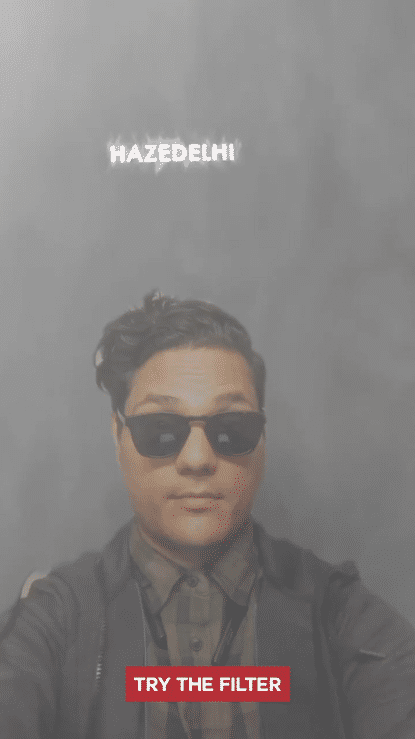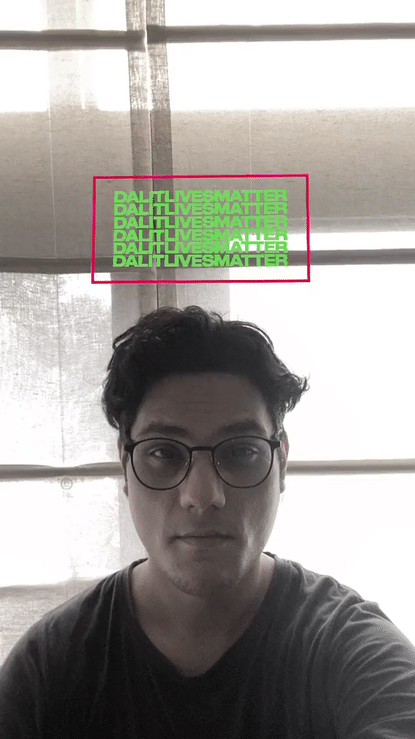Unfiltered
Tik-Tok and the emerging face of culture
New Media / Net based Installation
![Kunstraum Walcheturm, Zurich]()
![Space 10, New Delhi]()
![Reithalle, St. Moritz]()
![ICA, Yerevan]()
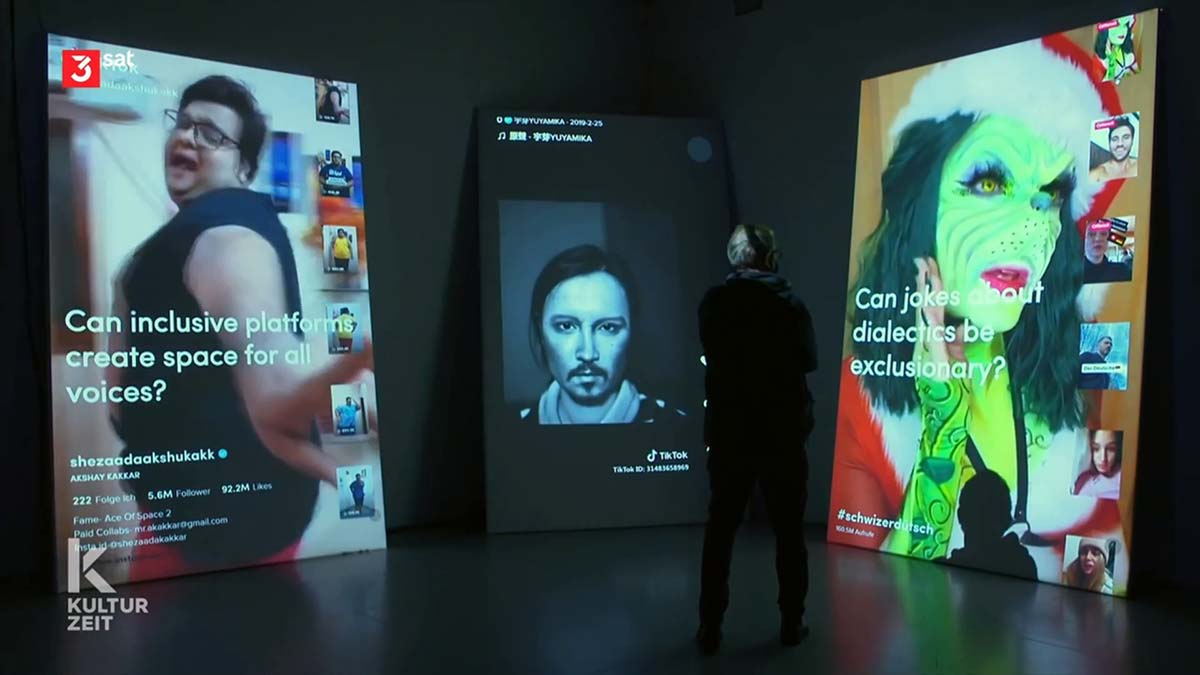



Unfiltered is an immersive net-based installation on digital accessibility, questioning its impact on public consciousness, visual aesthetics, and identity structures. It speculates on the role of technology and social platforms as tools of mass influence and positive social change.
With unprecedented and ever-increasing access to smartphones and the internet, digital hierarchies are being broken. Platforms like TikTok are the new town halls with 'influence' no longer restricted to the urban elite. In a country like India where class barriers have propagated exclusive silos of physical and digital spaces, a platform like TikTok has broken those boundaries, levelling the playing field. This has in turn enabled a new generation of content creators who exist outside urban echo chambers and has led to the creation of unique visual languages.
But what have the voices missing from mainstream been saying? Can positive social messaging lead to systemic change? Can complex ideas around gender, sexuality, identity, and social equity be understood and adopted through such platforms? Unfiltered poses these questions and more through the diverse voices of TikTok.
Unfiltered was made in collaboration with Swiss New Media artist Marc Lee. The net-based installation is localized for each country to reflect the voices and ideas being projected by the youth. The Project was Supported by The India Art Fair and Pro Helvetia New Delhi, St+art India Foundation, and SPACE10 [IDEO]
With unprecedented and ever-increasing access to smartphones and the internet, digital hierarchies are being broken. Platforms like TikTok are the new town halls with 'influence' no longer restricted to the urban elite. In a country like India where class barriers have propagated exclusive silos of physical and digital spaces, a platform like TikTok has broken those boundaries, levelling the playing field. This has in turn enabled a new generation of content creators who exist outside urban echo chambers and has led to the creation of unique visual languages.
But what have the voices missing from mainstream been saying? Can positive social messaging lead to systemic change? Can complex ideas around gender, sexuality, identity, and social equity be understood and adopted through such platforms? Unfiltered poses these questions and more through the diverse voices of TikTok.
Unfiltered was made in collaboration with Swiss New Media artist Marc Lee. The net-based installation is localized for each country to reflect the voices and ideas being projected by the youth. The Project was Supported by The India Art Fair and Pro Helvetia New Delhi, St+art India Foundation, and SPACE10 [IDEO]
India Unfiltered: 3 Channel installation, New Delhi
Unfiltered is a 3-channel installation that creates an endless flow of rich videos and media reflecting the voices of youth. The premise of the installation came from a speculation that in a country like India, which now has the world's largest young population - a majority of which engages with such apps - can mass exposure to positive social messaging lead to systemic change?
![]() The Left Channel is an aggregation of hashtags representing positive social change messages. For example: #stoprape, #helppoor, #stopacidattacks, #cleanindia, #stopbullying, #genderfluidity, and so on. The screen runs each hashtag for 2-5 minutes, showcasing its top videos. Each hashtag also has a question posed as a speculation on top of the video stream. On average, the total view count of these hashtags ranges from a few million to 2.5 billion.
The Left Channel is an aggregation of hashtags representing positive social change messages. For example: #stoprape, #helppoor, #stopacidattacks, #cleanindia, #stopbullying, #genderfluidity, and so on. The screen runs each hashtag for 2-5 minutes, showcasing its top videos. Each hashtag also has a question posed as a speculation on top of the video stream. On average, the total view count of these hashtags ranges from a few million to 2.5 billion.
![]() The Center Channel showcases a curated selection representing unique mashups of aesthetics, innovative use of technology and the most viewed/top trending videos within the geography to give a snapshot of the region's sensibilities.
The Center Channel showcases a curated selection representing unique mashups of aesthetics, innovative use of technology and the most viewed/top trending videos within the geography to give a snapshot of the region's sensibilities.
![]() The Right Channel is a curated selection of users that create niche content that challenges societal norms. Often these users belong to or represent marginalised or fringe communities. Some themes are LGBTQI representation, innovative approaches to education, bodypositivity, anti ablesim etc.
The Right Channel is a curated selection of users that create niche content that challenges societal norms. Often these users belong to or represent marginalised or fringe communities. Some themes are LGBTQI representation, innovative approaches to education, bodypositivity, anti ablesim etc.
 The Left Channel is an aggregation of hashtags representing positive social change messages. For example: #stoprape, #helppoor, #stopacidattacks, #cleanindia, #stopbullying, #genderfluidity, and so on. The screen runs each hashtag for 2-5 minutes, showcasing its top videos. Each hashtag also has a question posed as a speculation on top of the video stream. On average, the total view count of these hashtags ranges from a few million to 2.5 billion.
The Left Channel is an aggregation of hashtags representing positive social change messages. For example: #stoprape, #helppoor, #stopacidattacks, #cleanindia, #stopbullying, #genderfluidity, and so on. The screen runs each hashtag for 2-5 minutes, showcasing its top videos. Each hashtag also has a question posed as a speculation on top of the video stream. On average, the total view count of these hashtags ranges from a few million to 2.5 billion. The Center Channel showcases a curated selection representing unique mashups of aesthetics, innovative use of technology and the most viewed/top trending videos within the geography to give a snapshot of the region's sensibilities.
The Center Channel showcases a curated selection representing unique mashups of aesthetics, innovative use of technology and the most viewed/top trending videos within the geography to give a snapshot of the region's sensibilities. The Right Channel is a curated selection of users that create niche content that challenges societal norms. Often these users belong to or represent marginalised or fringe communities. Some themes are LGBTQI representation, innovative approaches to education, bodypositivity, anti ablesim etc.
The Right Channel is a curated selection of users that create niche content that challenges societal norms. Often these users belong to or represent marginalised or fringe communities. Some themes are LGBTQI representation, innovative approaches to education, bodypositivity, anti ablesim etc.


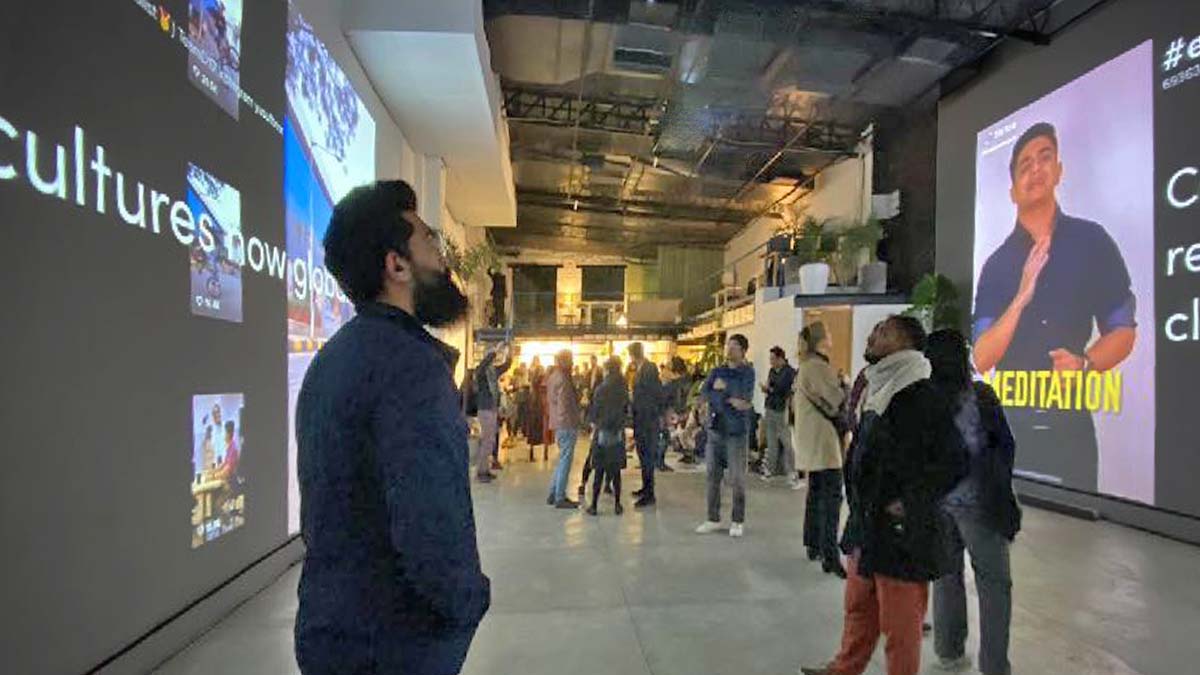

India Unfiltered, New Delhi
Swiss Unfiltered, Zurich

Swiss Unfiltered, Kunstraum Walcheturm, Zurich

Swiss Unfiltered, Reithalle, St. Moritz
EXHIBITIONS:
- CYFEST-15 International Media Art Festival, Institute for Contemporary Art, Yerevan, Armenia
- Arab Media Lab, Marrakesh, Morocco
- Hacking Identity - Dancing Diversity, European Capitals of Culture, Möllerei Esch,
Luxembourg - Swiss Media Art - Pax Art Awards, HEK (House of Electronic Arts), Basel, Switzerland
- Infrastrukturen, Galerie für Gegenwartskunst E-Werk, Freiburg, Germany
- Swiss Unfiltered, My home is my castle, Forum Schlossplatz, Aarau, Switzerland
- Swiss Unfiltered Da Z Digital Culture Festival, Kunstraum Walcheturm and Museum für Gestaltung, Zurich, Switzerland
- Games.Fights.Encounters, ONCURATING Project Space, Zurich, Switzerland
- India Unfiltered, Palladium, Chennai, India
- India Unfiltered, SPACE10, New Delhi, India
Hanging in the Void
Installation / Augmented Reality
Space - the final frontier.
An untouched, endless landscape made of interstellar stardust.
Or so you thought.
Hanging in the void is a multimedia installation comprising an Augmented Reality experience, a Zine, and a 1-channel video that visualizes the growing issue of space debris. Humans have launched over 8,000 objects into space since 1957. Currently, 5,000 objects orbit the Earth, less than 2,000 of which are functional. The rest is debris - floating around the Earth like flies around a giant garbage dump.
Most 'space junk' is moving very fast and can reach speeds of 18,000 miles per hour, almost seven times faster than a bullet. Due to the rate of speed and volume of debris in LEO (Low Earth Orbit), current and future space-based services, explorations, and operations pose a safety risk to people and property in space and on Earth.
Some statistics:
Here’s an interesting article about the issue
An untouched, endless landscape made of interstellar stardust.
Or so you thought.
Hanging in the void is a multimedia installation comprising an Augmented Reality experience, a Zine, and a 1-channel video that visualizes the growing issue of space debris. Humans have launched over 8,000 objects into space since 1957. Currently, 5,000 objects orbit the Earth, less than 2,000 of which are functional. The rest is debris - floating around the Earth like flies around a giant garbage dump.
Most 'space junk' is moving very fast and can reach speeds of 18,000 miles per hour, almost seven times faster than a bullet. Due to the rate of speed and volume of debris in LEO (Low Earth Orbit), current and future space-based services, explorations, and operations pose a safety risk to people and property in space and on Earth.
Some statistics:
- 34,000 pieces of space junk larger than 10 centimeters
- 128 million pieces of space junk larger than 1 millimeter
- One in 10,000: risk of collision that will require debris avoidance maneuvers
Here’s an interesting article about the issue
You enter a room and find the walls inscribed with names of all satellites launched into space since 1957. One of the walls has a large image of the Earth - ‘The Blue Marble’ taken from space on December 7, 1972, and is one of the most reproduced images in history. It was taken by the crew of the Apollo 17 spacecraft on its way to the Moon.
The image triggers an AR experience that shows the amount of space debris around the Earth. The scale of the debris is ofcourse exaggerated relative to the Earth, the size of the debris would be much smaller. But it gives a sense of the amout of particulate matter orbitting the Earth.
The research for this installation was sourced through public databases provided by the United Nations Office for Outer Space Affairs and the Union of Concerned Scientists, which list all 8,378 objects launched since 1957, and 4,987 objects currently whizzing above our heads at this very moment in time. Data was last updated in January 2019.

The Zine consists of stills from iconic sci-fi movies that have visualized the Earth from space. Our impressions of the world around us are built by the media we consume, with images in pop culture and films creating an impression that is most times, an illusion. Films like 2001: A Space Odyssey, Alien, Event Horizon, and Interstellar all build this pristine image of space as an untouched final frontier, which is far from reality.
Hanging in the Void has been exhibited at F(r)iction at Kona, New Delhi in 2019.
Hanging in the Void has been exhibited at F(r)iction at Kona, New Delhi in 2019.
Inside Out x Sassoon Dock
Public Art, Installation, Photo
Sassoon Dock is a 145-year-old fishing dock in South Mumbai. The fishermen and women communities of Sassoon are among the oldest settlers of Bombay, being the invisible lifeline that helped the city build around them. The Inside Out Project at Sassoon Dock aimed to shed light on the faces behind Sassoon as a way of celebrating their lives, livelihoods, and contribution to the city.
In the city of Bollywood, where celebrities and film stars are eulogized on large-size posters, the representation of the everyday workers of Sassoon was a way of acknowledging their immense value in the very space they inhabit daily. The project celebrated them as the real stars of the city of stars. This was done by pasting large portraits of the people of Sassoon Docks on the very warehouses they work in.
The Inside Out Project is a global art project transforming messages of personal identity into works of art. The project was initiated by French artist-photographer extraordinaire JR. Find out more here
This project was done in collaboration with photographer Pranav Gohil
RESEARCH
In the city of Bollywood, where celebrities and film stars are eulogized on large-size posters, the representation of the everyday workers of Sassoon was a way of acknowledging their immense value in the very space they inhabit daily. The project celebrated them as the real stars of the city of stars. This was done by pasting large portraits of the people of Sassoon Docks on the very warehouses they work in.
The Inside Out Project is a global art project transforming messages of personal identity into works of art. The project was initiated by French artist-photographer extraordinaire JR. Find out more here
This project was done in collaboration with photographer Pranav Gohil
RESEARCH

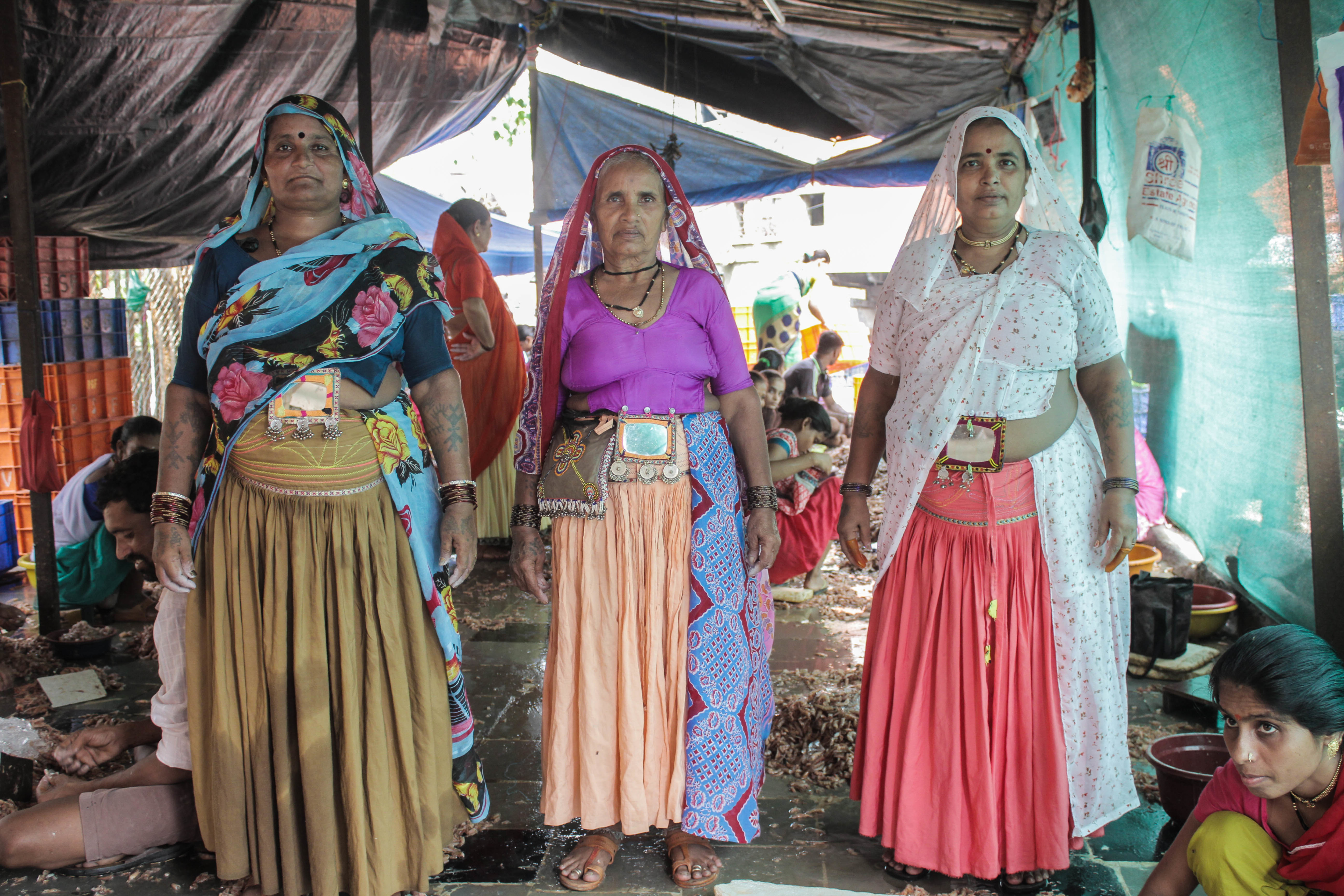

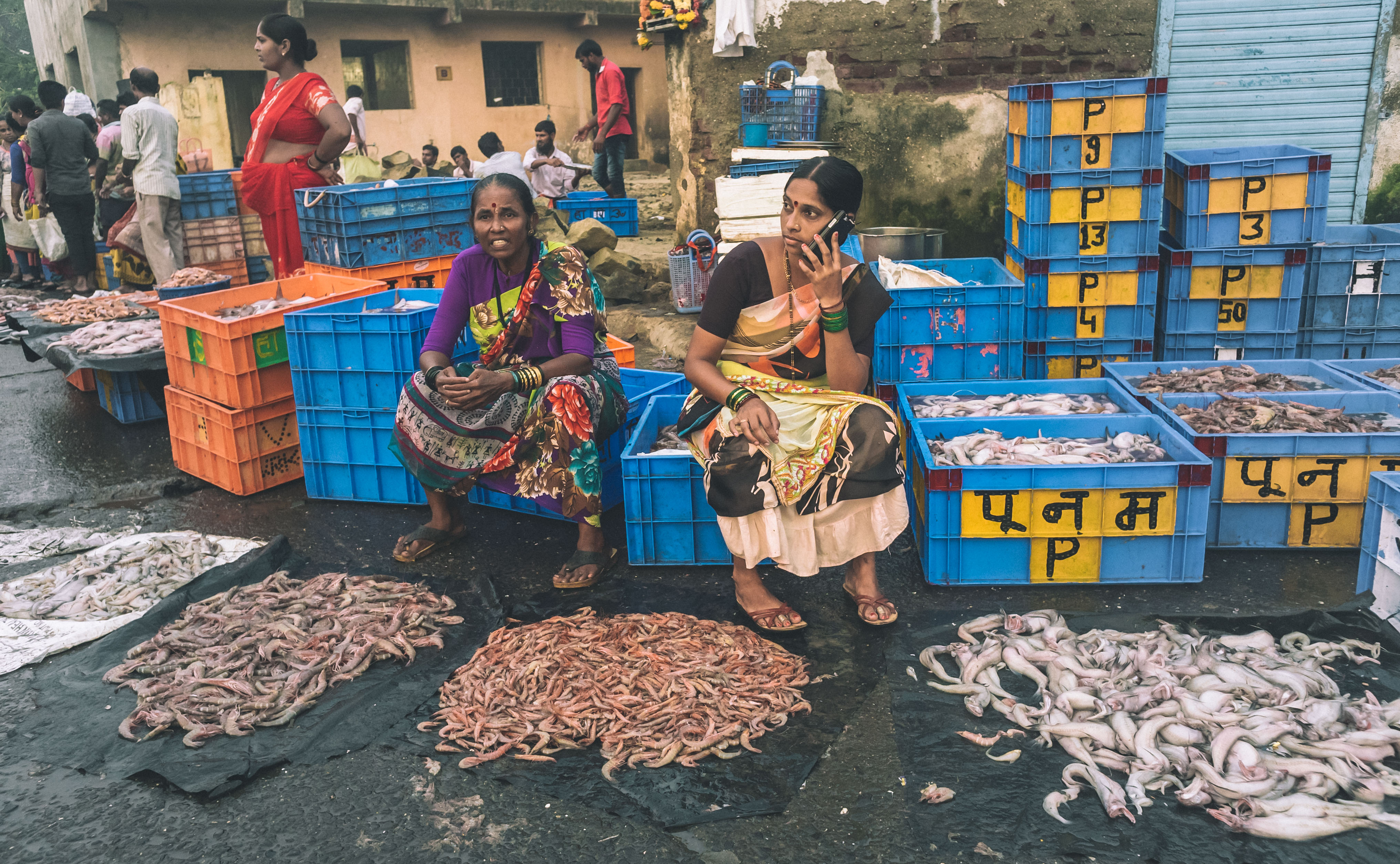


The Sassoon Dock is situated in Colaba, in the heart of the old town. Yet it is a space most locals are unaware of. The initial research entailed spending days at the dock to get a sense of the dynamics of the space, while speaking with community leaders helped understand the different socio-cultural demographics of the communities living and working in the area.
Having been misrepresented by several journalists, photographers, and foreigners over the years, we were initially met with hesitation. But over weeks of clearing their doubts and making them understand the intent of the project, we were able to gain the trust of the community leaders.
Through the conversations, it emerged that Sassoon Dock was primarily inhabited by three communities - The Koli Fishermen, The Banjaras, and The Hindu Marathas. All three communities were integral to the micro-economy of the market.
The Koli Fishermen go out to sea and catch the fish, while the women help to sell them. The Banjara men handle hauling the fish off the boats, while the women help in the peeling activities. The Hindu Marathas are the carters - both men and women. They transport fish from the wholesalers to smaller sellers within Sassoon and other parts of the city.
PRODUCTION
To build the project without causing too much disruption to their lives, a temporary studio was set up within an abandoned part of the warehouse to make portraits of the community. Eventually, over 350 portraits were pasted across the walls of Sassoon Dock.

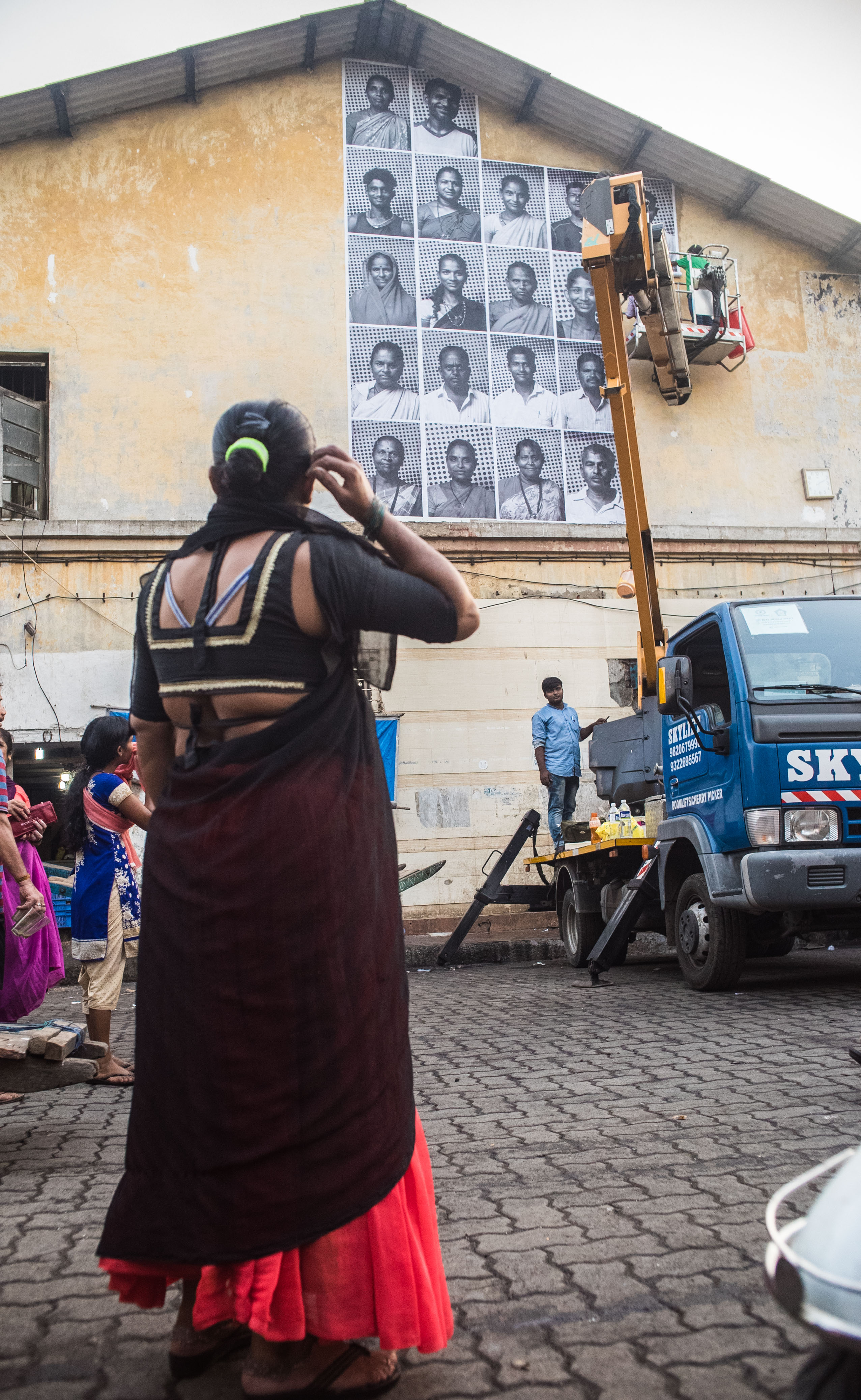
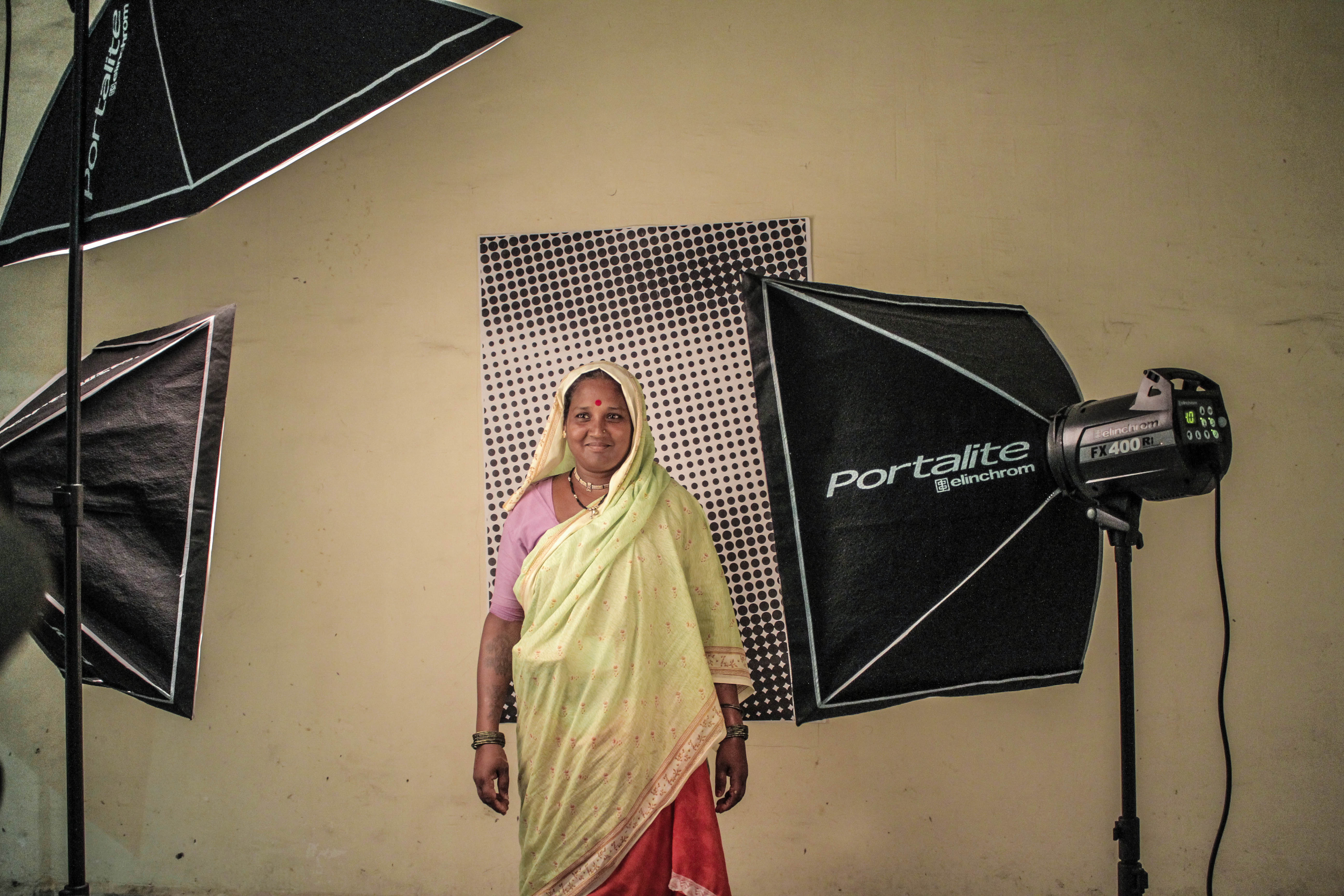
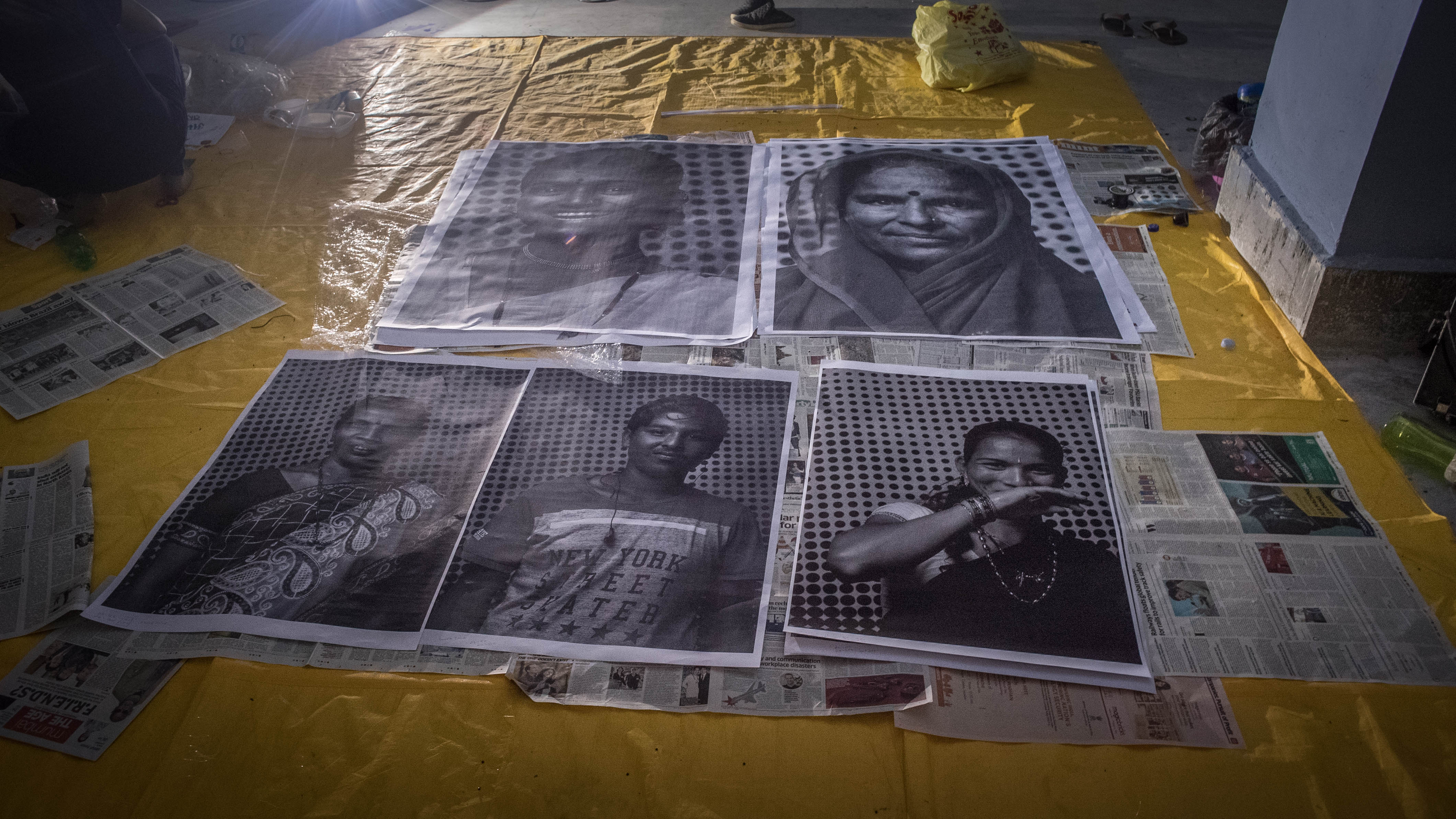
FINAL INSTALLATION


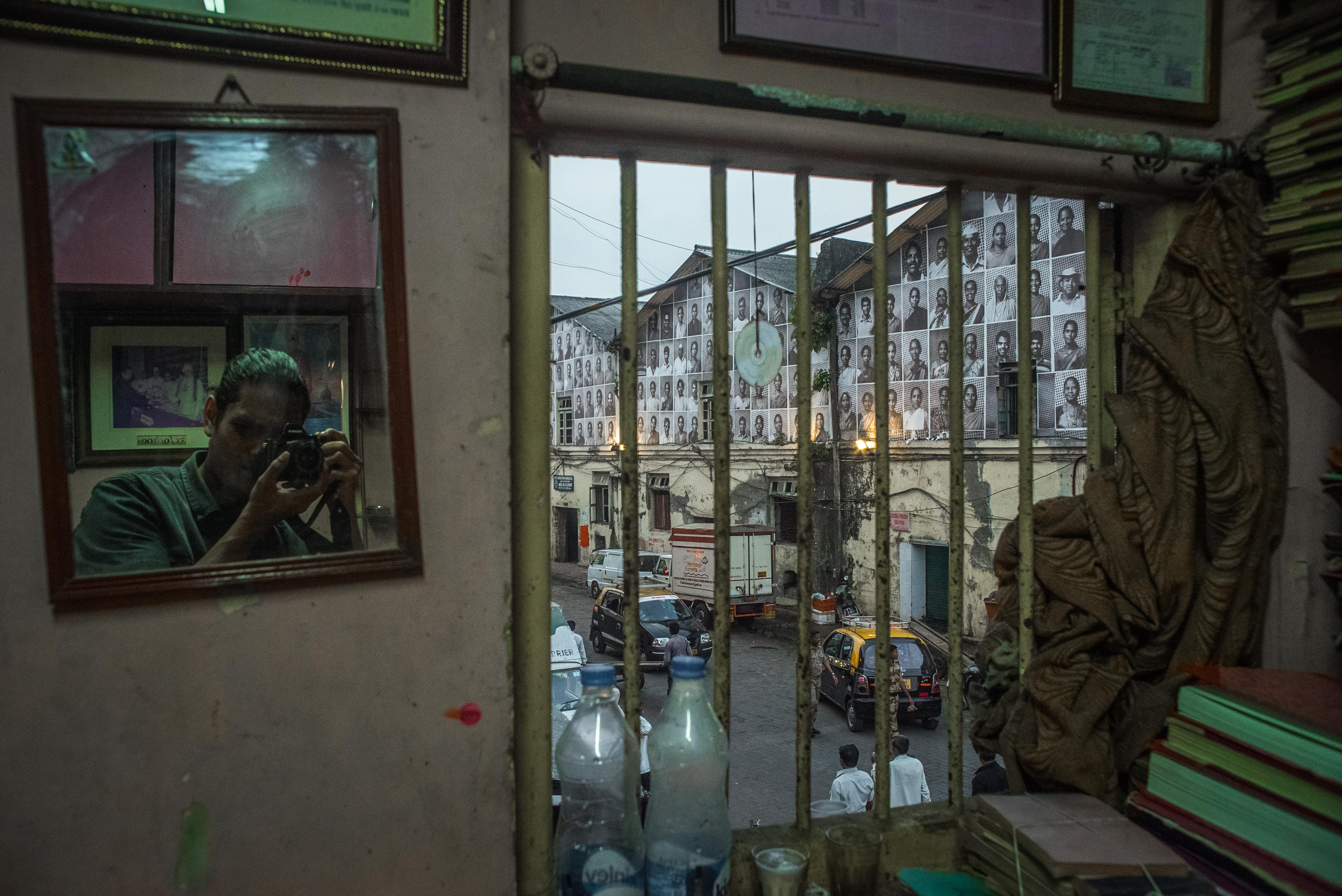
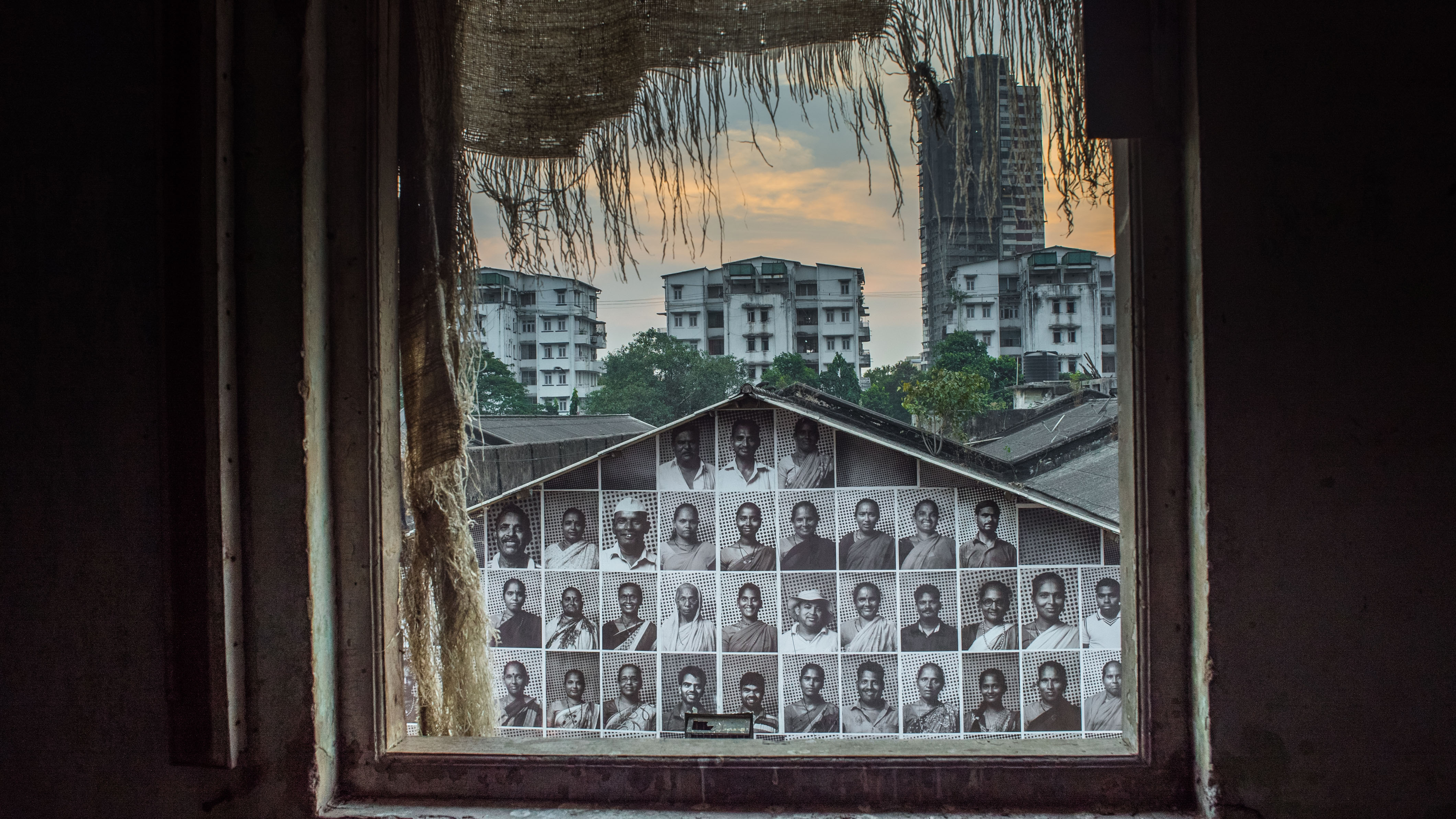
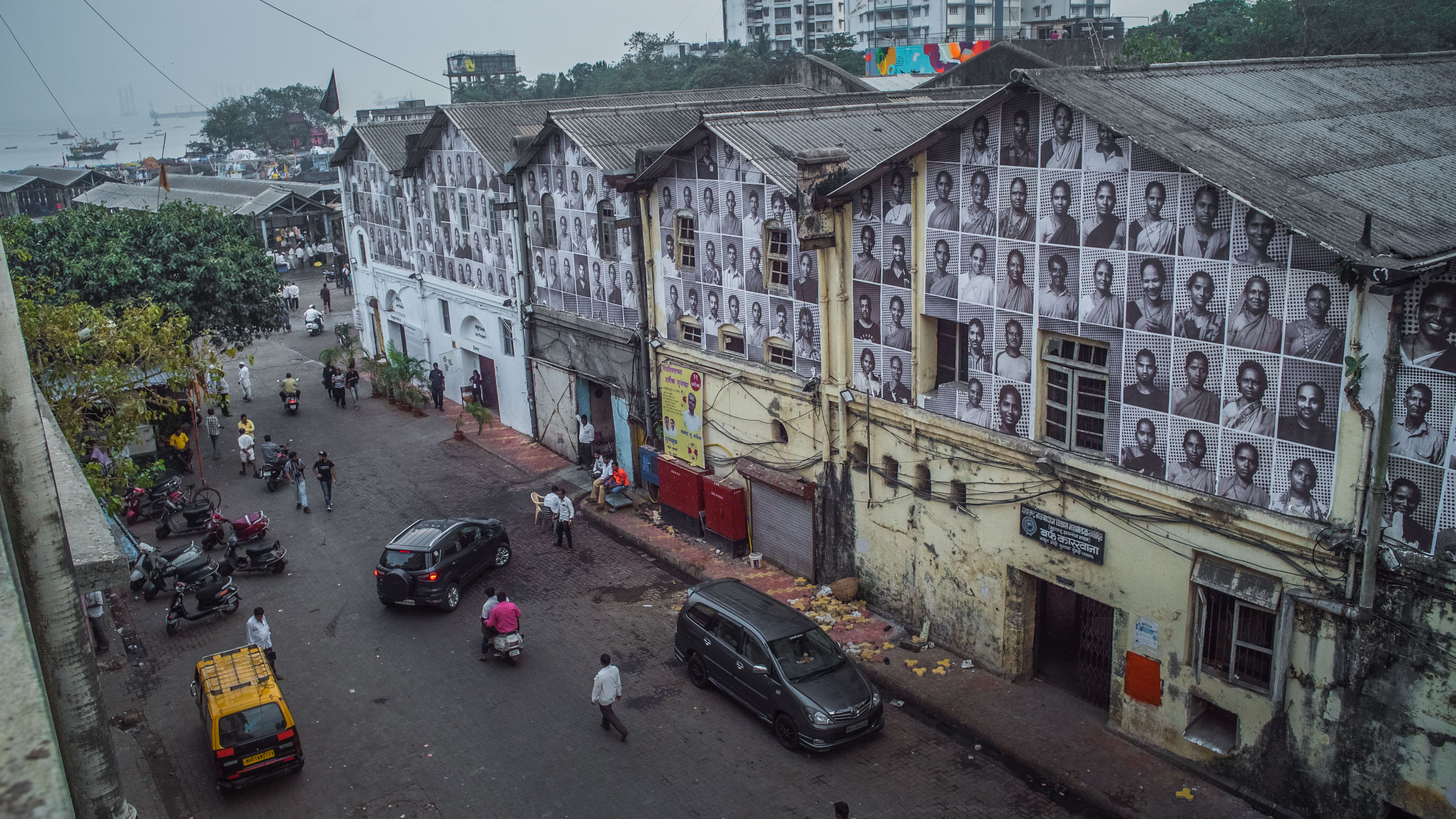

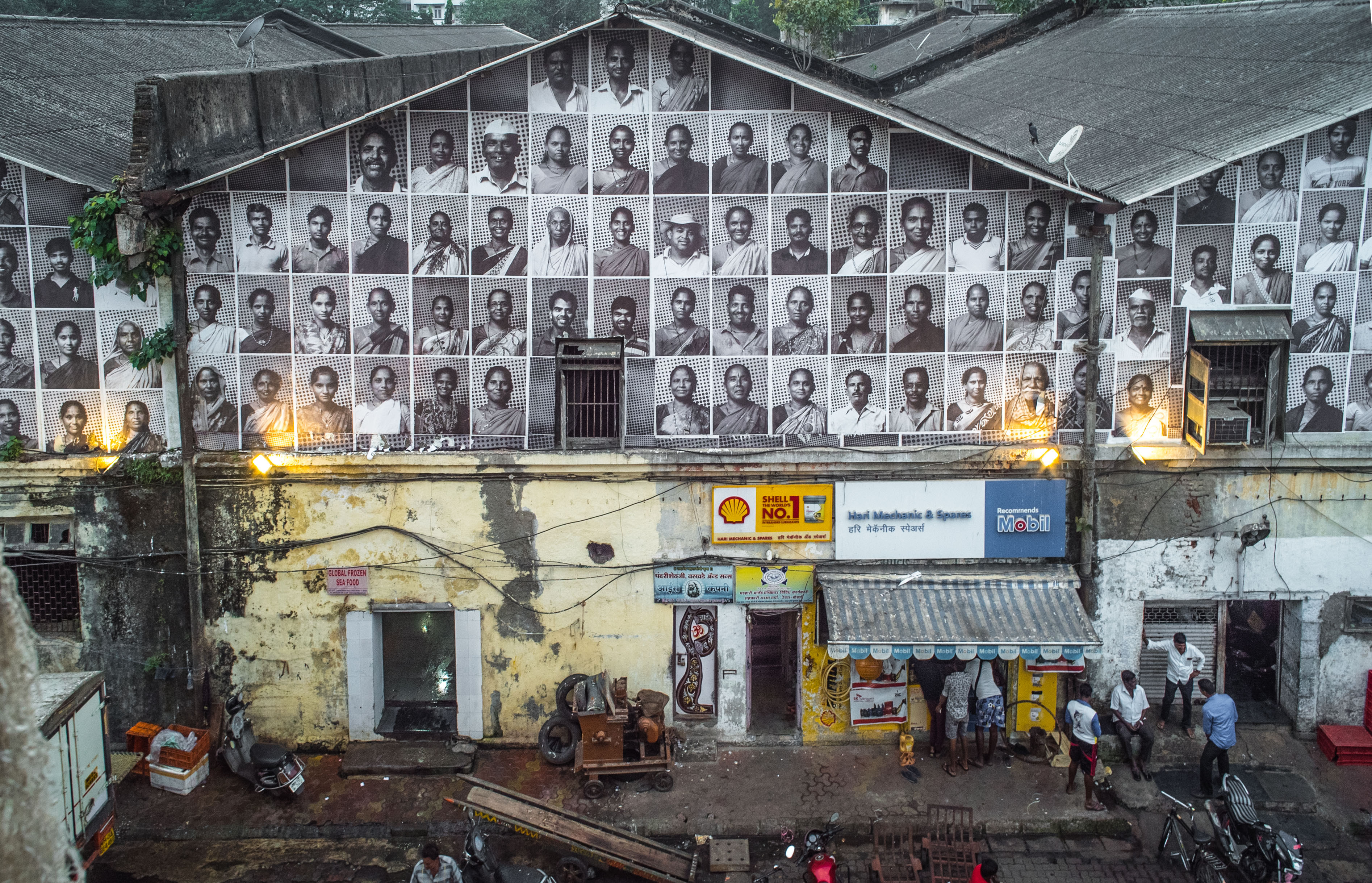
Here’s short film about the project
Unearthed
Public Art Mural / Web-VR
The Microverse
The Microverse
We humans are a conduit to infinity - both by being in an ever-expanding universe and simultaneously creating infinite virtual worlds within it.
And within that infinity, we are all minute fractional microorganisms, pulsating at our own unique frequencies, creating (and destroying) ecosystems and society.
The Microverse represents one such virtual world. Each entity within it emits a sound that builds a musical soundscape as you float through the experience.
In a time when the colonization of virtual spaces and the Metaverse is well and truly underway by corporates and get-rich-quick cash-grab projects, The Microverse is my claim to a piece of digital land - a safe place of solace. A heterotopia, or a dream - a parallel world within a world.
The Microverse is a positional audio-based web VR experience created as part of the Unearthed Project.
And within that infinity, we are all minute fractional microorganisms, pulsating at our own unique frequencies, creating (and destroying) ecosystems and society.
The Microverse represents one such virtual world. Each entity within it emits a sound that builds a musical soundscape as you float through the experience.
In a time when the colonization of virtual spaces and the Metaverse is well and truly underway by corporates and get-rich-quick cash-grab projects, The Microverse is my claim to a piece of digital land - a safe place of solace. A heterotopia, or a dream - a parallel world within a world.
The Microverse is a positional audio-based web VR experience created as part of the Unearthed Project.
Unearthed Aftermovie
Inspired by the wild spaces that exist within and around us, PluginHUMAN, Yorta Yorta artist Lorraine Brigdale, and Akshat Nauriyal bring you UNEARTHED, a projection-mapped mural and a Web-VR 'Microverse'.
UNEARTHED engages both physical and digital landscapes. The artwork features a mural with contemporary re-workings of Yorta Yorta shields by Lorraine Brigdale and enlarged micrographs by Betty Sargeant. Embedded in the mural is an icon that connects audiences with a microverse. When audiences hold their phones to the icon, they access an explorable digital landscape created by Mumbai-based new media artist Akshat Nauriyal and PluginHUMAN. This microverse is a parallel universe that exists alongside our non-digital reality. At night, the mural is transformed into a projection-mapped light experience created by Justin Dwyer.
The name 'microverse' is used here to describe a small independent digital landscape. People don't need to download an app or log in. It's a web-based 3D digital experience. Many contemporary people exist in both an analogue universe that is ever-expanding and within virtual spaces built on digital topographies. This microverse is a digital space that draws on elements of the analogue world; it's a heterotopia or dreamspace.
UNEARTHED engages both physical and digital landscapes. The artwork features a mural with contemporary re-workings of Yorta Yorta shields by Lorraine Brigdale and enlarged micrographs by Betty Sargeant. Embedded in the mural is an icon that connects audiences with a microverse. When audiences hold their phones to the icon, they access an explorable digital landscape created by Mumbai-based new media artist Akshat Nauriyal and PluginHUMAN. This microverse is a parallel universe that exists alongside our non-digital reality. At night, the mural is transformed into a projection-mapped light experience created by Justin Dwyer.
The name 'microverse' is used here to describe a small independent digital landscape. People don't need to download an app or log in. It's a web-based 3D digital experience. Many contemporary people exist in both an analogue universe that is ever-expanding and within virtual spaces built on digital topographies. This microverse is a digital space that draws on elements of the analogue world; it's a heterotopia or dreamspace.

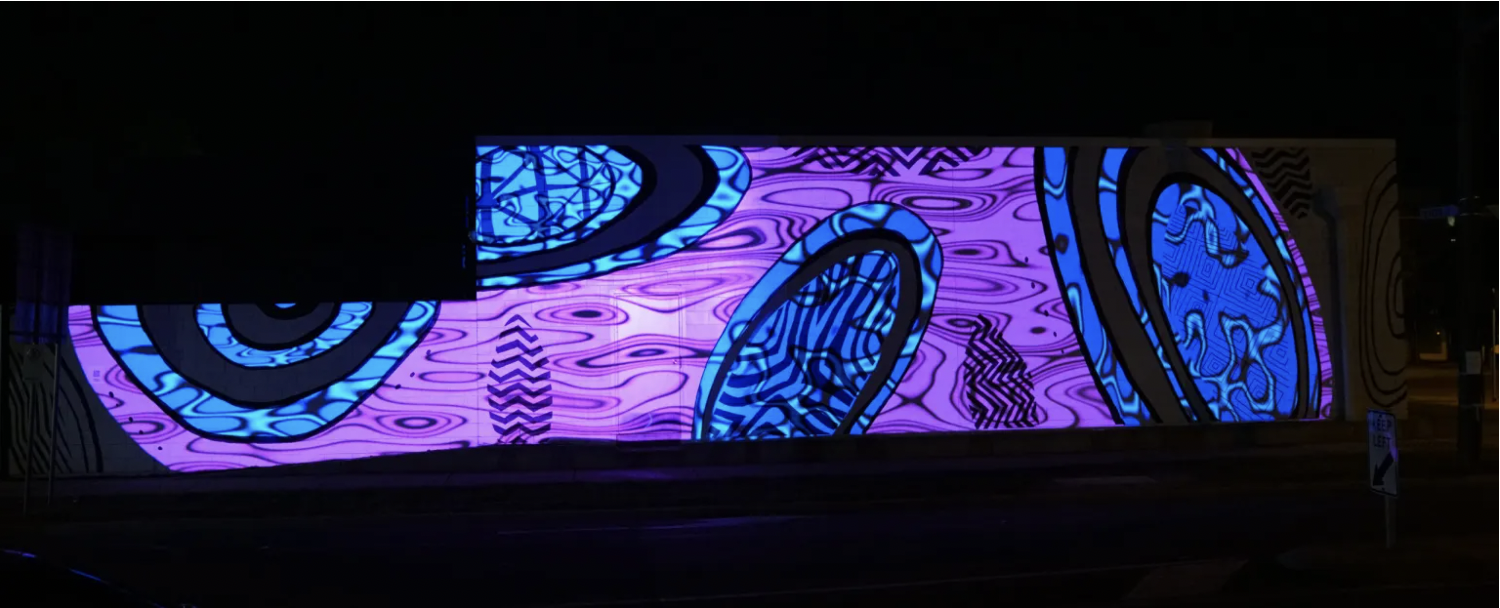


This project was supported by Asialink Arts, The Australian High Commission, Delhi India, Renew Australia, The Exertion Games Lab GOTAFE, DULUX Australia and La TRobe University (Shepparton)
Unearthed and the Microverse have been exhibited at the Shepparaton Festival and the Glen Eira City Council Gallery, Australia.
Unearthed and the Microverse have been exhibited at the Shepparaton Festival and the Glen Eira City Council Gallery, Australia.
Reject CAA
Augmented Reality, Digital ProtestIn December 2019, the Citizenship Amendment Act (CAA) was passed by the Parliament of India. The law provided a pathway to citizenship for refugees from several countries and religions, except for Muslims from Muslim-majority countries. This was highly problematic as religion was overtly used as a criterion for citizenship, which violates the secular fabric of the constitution. The CAA, coupled with the National Registry of Citizenship (NRC), would require citizens to produce documents to validate their claims to citizenship. Those without documents could be declared illegal immigrants.
This led to countrywide protests against the CAA + NRC, followed by a heavy-handed response by the government to suppress dissent. Protesters were met with violent lathi charges, water cannons, and tear gas, with several students, activists, and protesters arrested, many under the anti-terror UAPA laws.
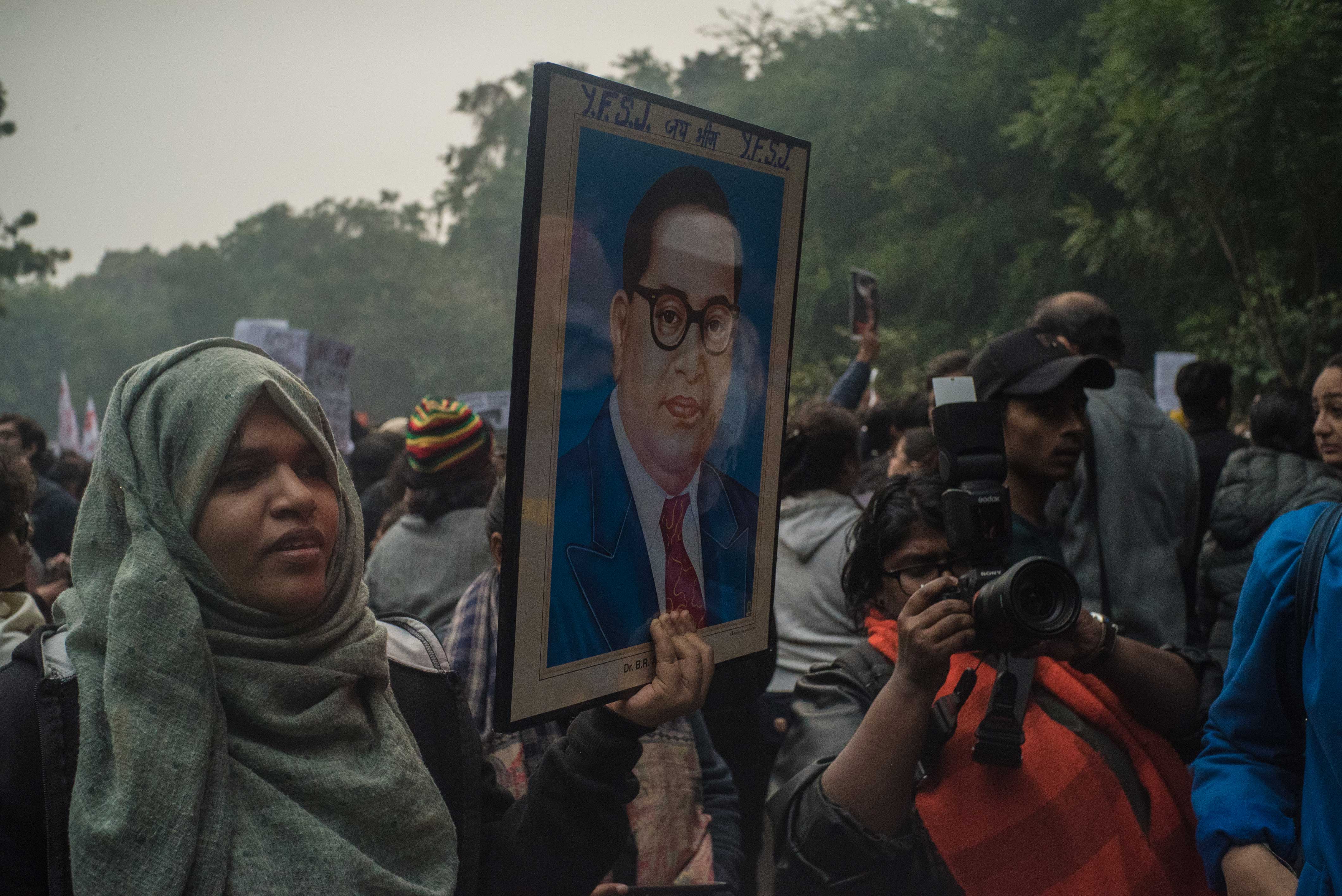



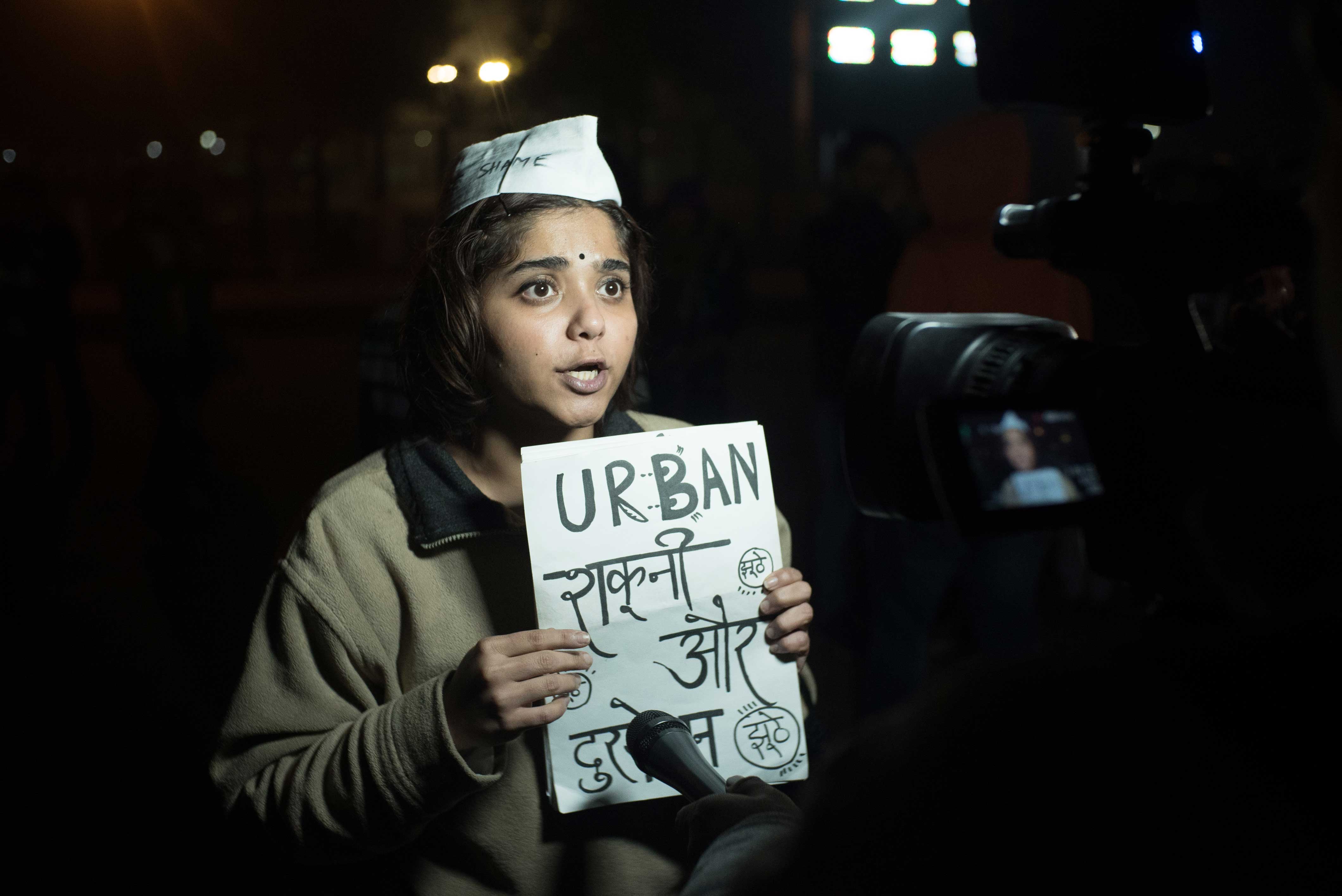
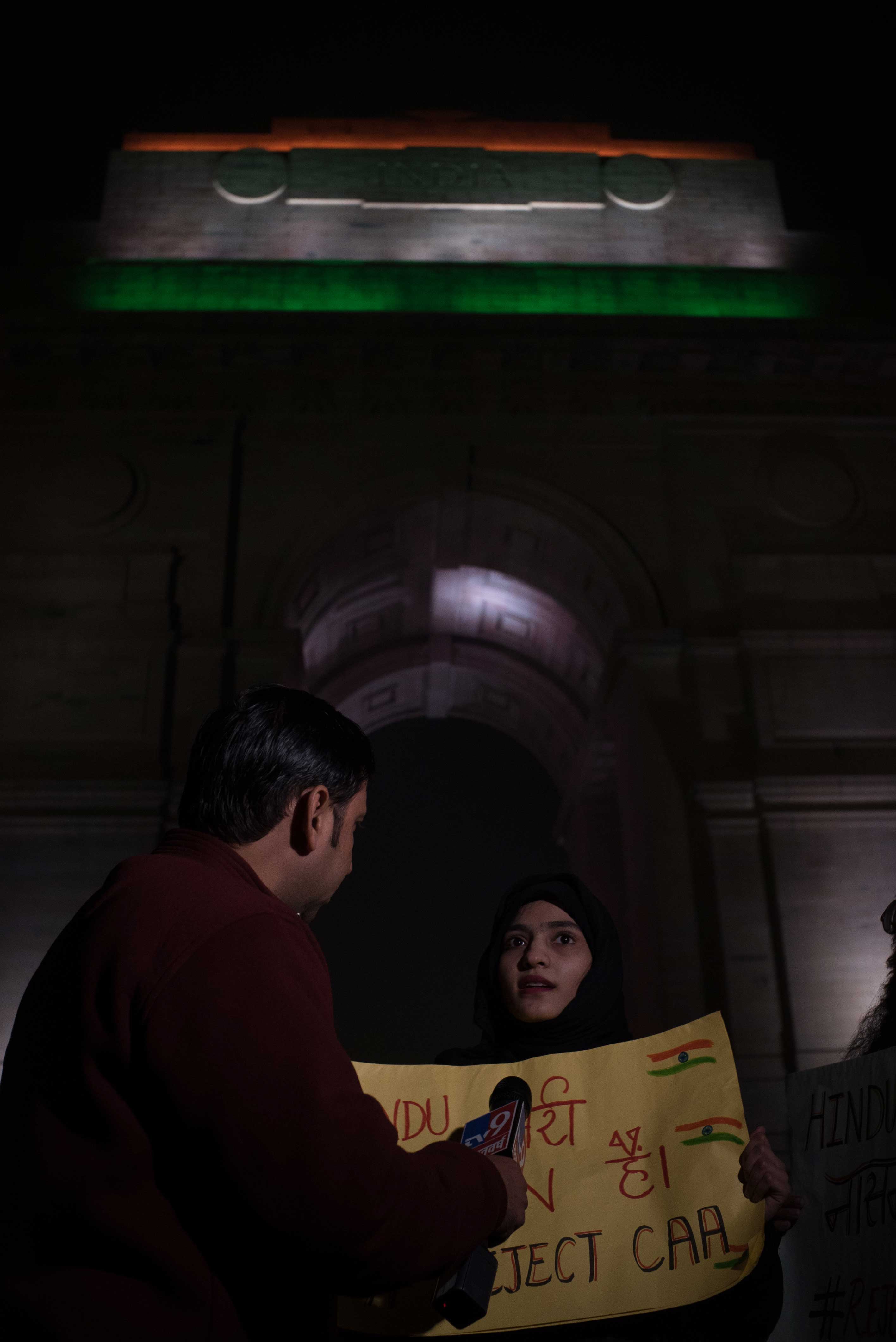


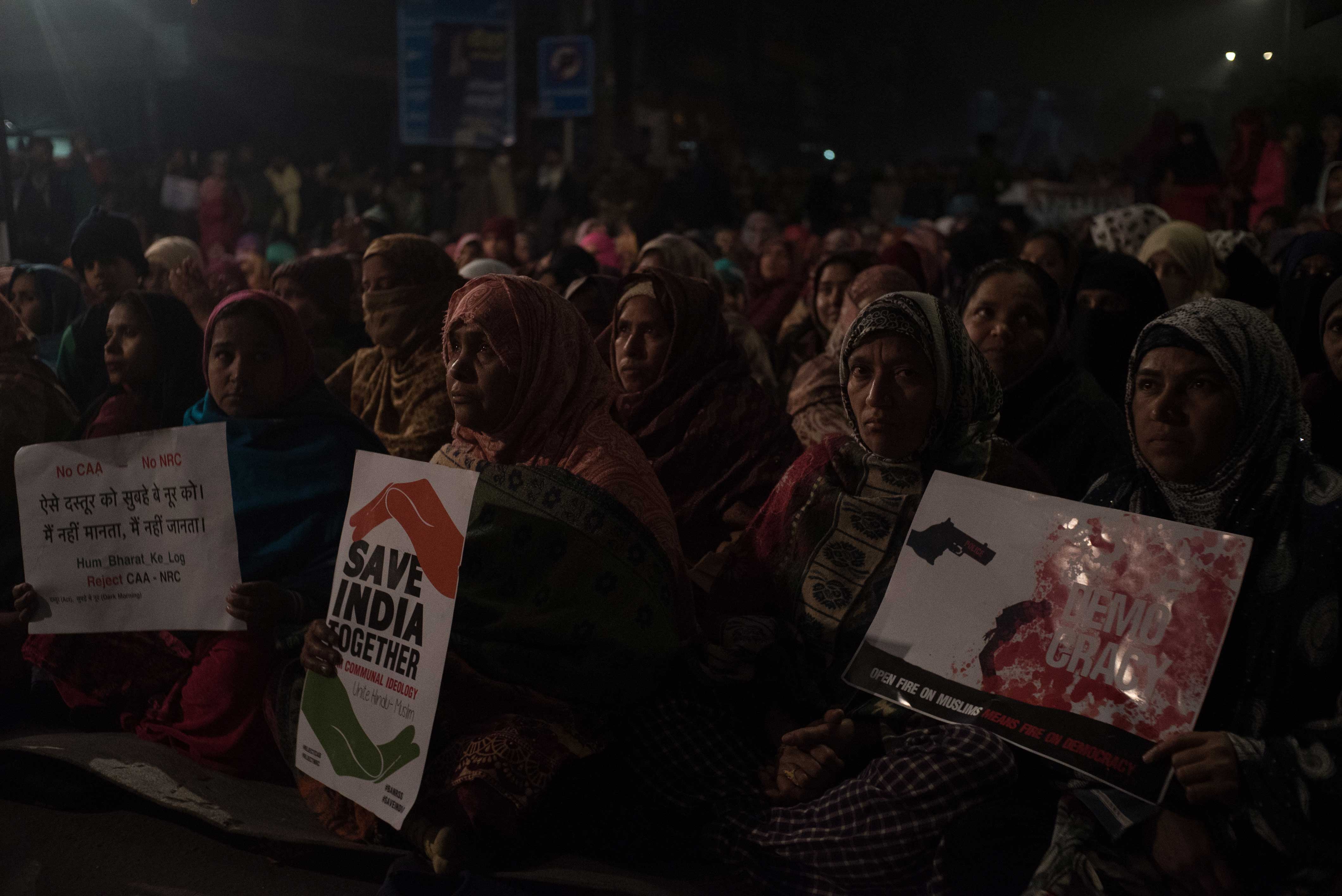
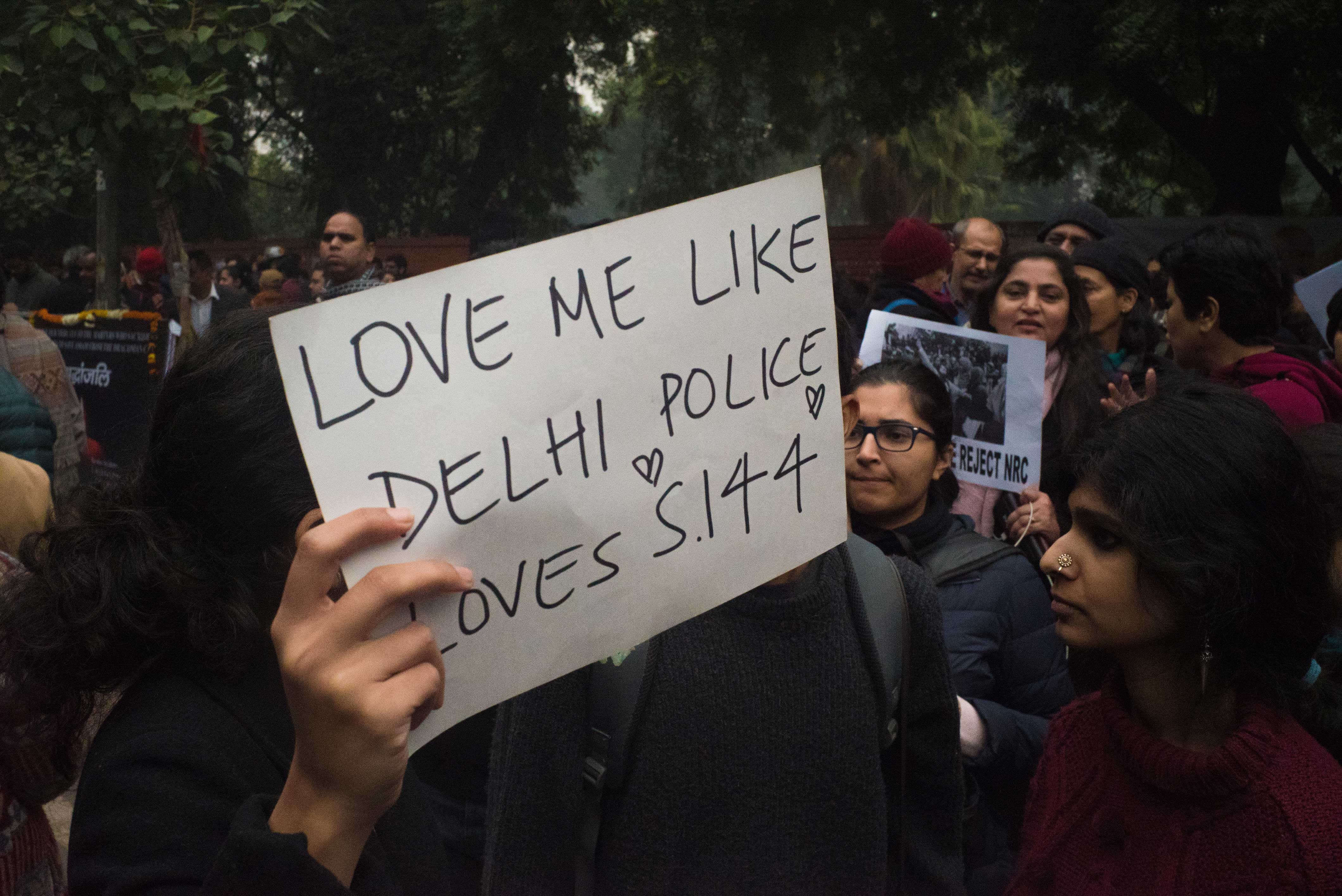
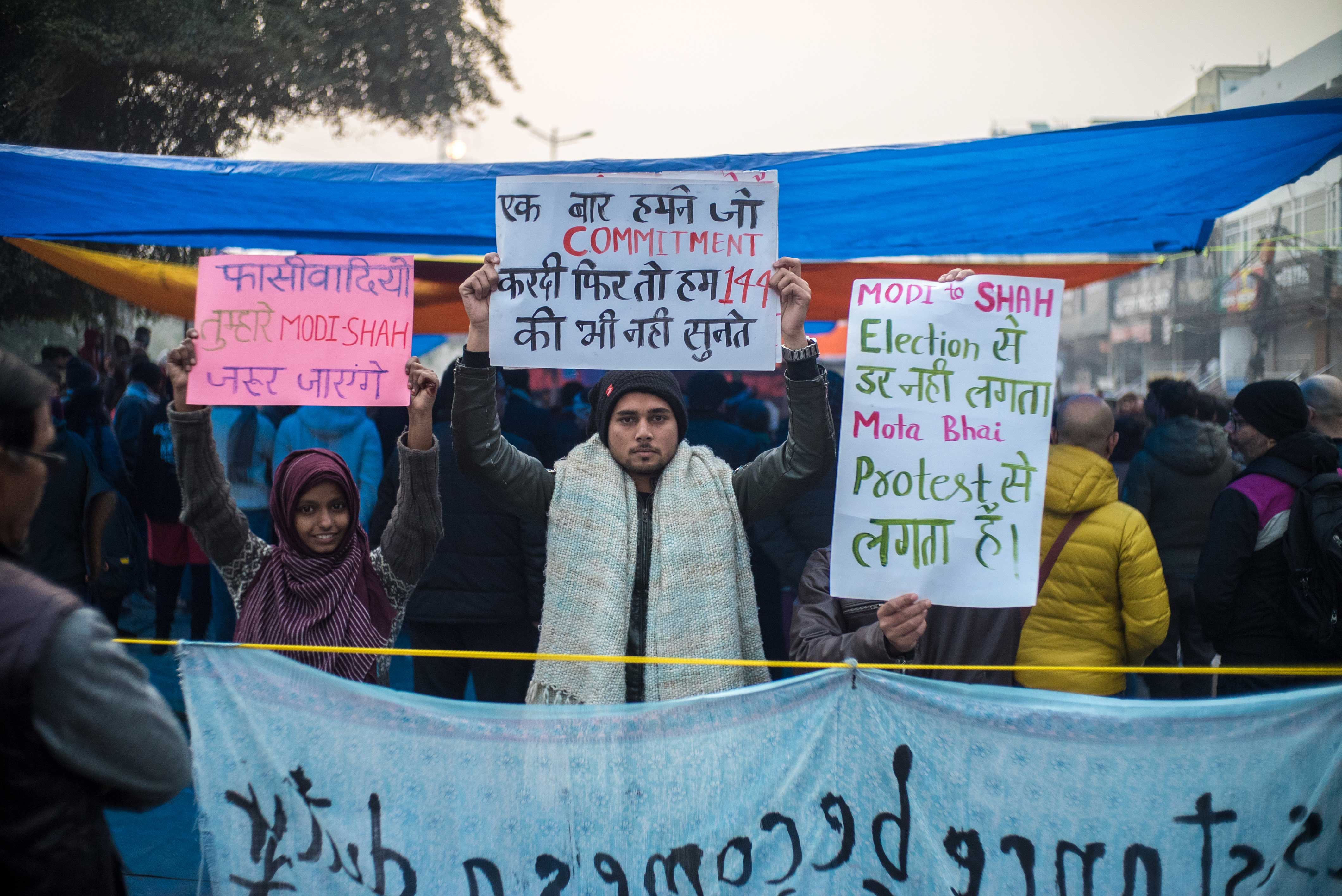
Images from protests / Delhi 2019
Several peaceful protest sites mushroomed across the country, all in the image of Shaheen Bagh - a women-led sit-in protest in a small Muslim-dominated neighborhood in East Delhi, which became a symbol of resistance. I went to several of the protests but wanted to do more for the movement and amplify the message online. The Reject Filter came out of that need. This filter was created in support of the movement and provided three messages to get behind. It also provided three options for posting your story without showing your face, to encourage introverts and people who weren't comfortable showing their face to support the movement more anonymously.
The filter was used + viewed over 200,000 times.
Reject Filter use cases

This filter is part of a series of Augmented Reality filters created to explore the use of social media as a tool for activism and amplifying on-ground protest movements digitally. Platforms like Facebook and Instagram have become the new town halls where people share ideas and opinions, offering new digital venues for activism and protest.
By enabling users to publish directly on their profiles, the filters encourage people to take a stand on issues they care about and make their voices heard.
All filters are published and freely accessible on Facebook and Instagram. Despite having my own reservations towards armchair activism, which in itself is problematic, the reach of the platforms and their role in shaping public opinion are undeniable. The filters were an experiment to study this new emerging paradigm of human social behavior towards a positive cause.
All filters are published and freely accessible on Facebook and Instagram. Despite having my own reservations towards armchair activism, which in itself is problematic, the reach of the platforms and their role in shaping public opinion are undeniable. The filters were an experiment to study this new emerging paradigm of human social behavior towards a positive cause.
#WITHKASHMIR
Augmented Reality, Digital Protest
Jammu and Kashmir has long been a disputed territory in the Asian subcontinent since the partition of India and Pakistan in 1947. Years of conflict have transformed it into the most militarized zone in the world. Article 370 of the Indian constitution gave special status to Jammu and Kashmir, conferring it with the power to have a separate constitution, a state flag, and autonomy over the internal administration of the state.
On August 5, 2019, the Government of India issued a Presidential Order abrogating Article 370. Critics of the move saw this as a distraction from the failings of the government - the lowest economic growth rate in decades, rising unemployment, and growing disillusionment in a post-demonetization India.
The merits of the abrogation of Article 370 may be up for debate, but what followed the landmark ruling was a heavy-handed suppression of the fundamental rights of the people of Kashmir. Opposition leaders were placed under house arrest, with 4G and internet services shut down across the valley. In essence, this was a communication blackout for the people of Kashmir, isolating them from the rest of the country.
On August 5, 2019, the Government of India issued a Presidential Order abrogating Article 370. Critics of the move saw this as a distraction from the failings of the government - the lowest economic growth rate in decades, rising unemployment, and growing disillusionment in a post-demonetization India.
The merits of the abrogation of Article 370 may be up for debate, but what followed the landmark ruling was a heavy-handed suppression of the fundamental rights of the people of Kashmir. Opposition leaders were placed under house arrest, with 4G and internet services shut down across the valley. In essence, this was a communication blackout for the people of Kashmir, isolating them from the rest of the country.


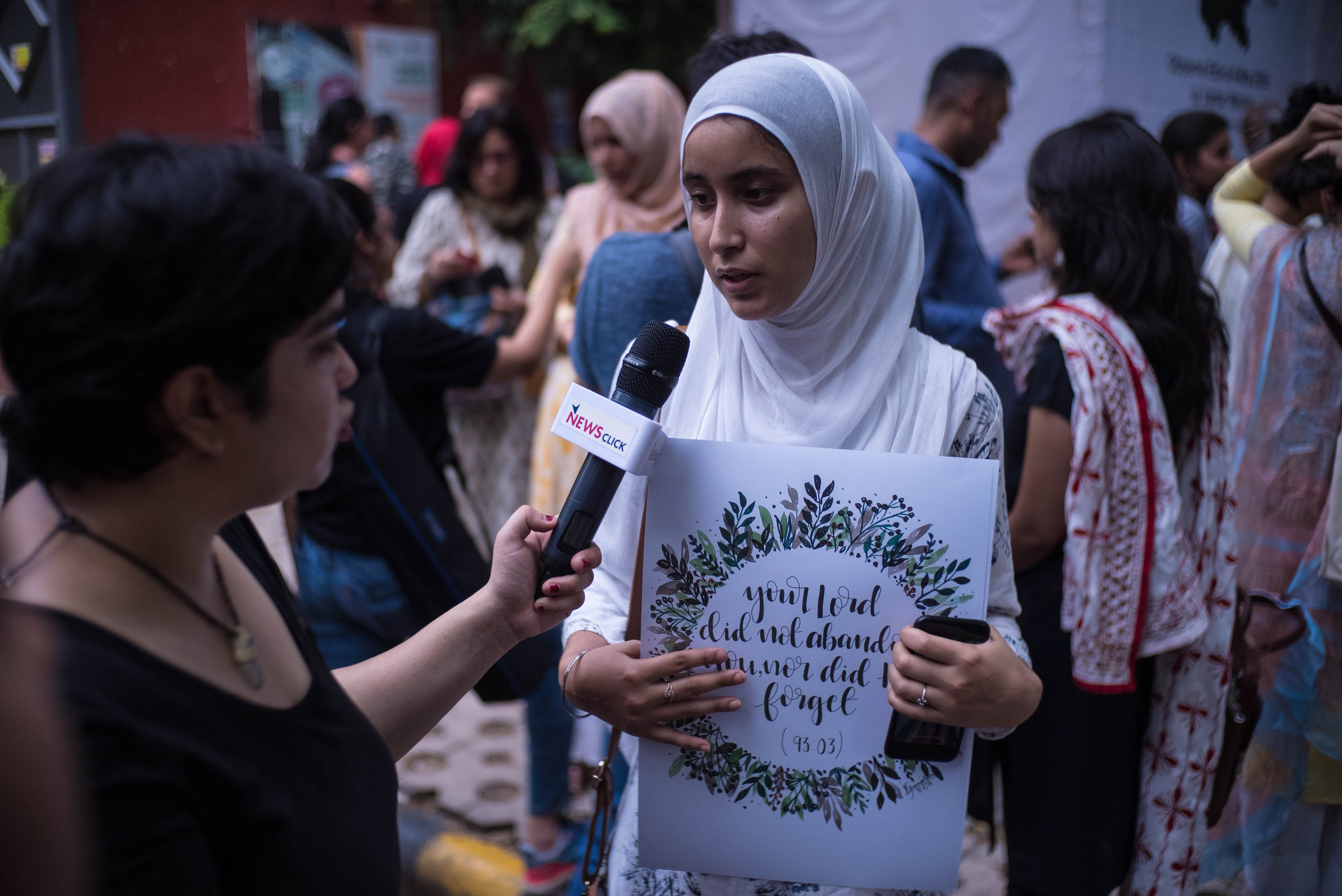


Protests were organized across the country against the abrogation of Article 370. More than the act itself, the violation of the right to free speech and representation of the people of Kashmir was an alarming development. It went against the rights guaranteed by the constitution of the largest democracy in the world. Having been to several protests in New Delhi, I felt the need to contribute to the movement in any way I could.
With Kashmir FIlter
An online movement was started under the hashtag #WithKashmir to aggregate voices against the communication blackout. The #WithKashmir filter was made in support of that movement, in solidarity with the people of Kashmir who were being silenced. As of January 2021, the filter had been used + viewed 150,000 times.
This filter is part of a series of Augmented Reality filters created to explore the use of social media as a tool for activism and amplifying on-ground protest movements digitally. Platforms like Facebook and Instagram have become the new town halls where people share ideas and opinions, offering new digital venues for activism and protest. By enabling users to publish directly on their profiles, the filters encourage people to take a stand on issues they care about and make their voices heard.
All filters are published and freely accessible on Facebook and Instagram. Despite having my own reservations towards armchair activism, which in itself is problematic, the reach of the platforms and their role in shaping public opinion are undeniable. The filters were an experiment to study this new emerging paradigm of human social behavior towards a positive cause.
Experimental Filters
Augmented RealityClick the links to try them on Mobile
ASI SCAN
Made to playfully address the Archaeological Survey of India’s (ASI) unprecedented spree of discoving Hindu monuments buried beneath Islamic sites
Awaaz
Film / Social Justice / Series

Throughout history, dissent has been a pillar of democracy - a check in place to safeguard citizens' rights. And music is one of its most potent weapons. Awaaz traces the socio-political histories and present realities of four Asian countries through the eyes and voices of prominent artists who use their music as a platform for social change.
Awaaz, which literally translates to 'voice' in Hindi and Urdu, is a four-part series featuring artists from Pakistan, Sri Lanka, Iran, and India. The project was commissioned by Goethe-Institut / Max Mueller Bhavan, New Delhi as part of their Music, Activism and Protest [M.A.P.A.M.P] grant. I directed and produced the series through my production company Studio Now Delhi
The first episode features Roody, a 22-year-old MC and multi-disciplinary artist from West Tehran. Roody's work echoes the socio-political realities of Iran, a country where being a female rapper in itself is an act of resistance. Roody's powerful body of work has established her as one of the most prolific female hip-hop artists in the Iranian contemporary music scene.
Awaaz, which literally translates to 'voice' in Hindi and Urdu, is a four-part series featuring artists from Pakistan, Sri Lanka, Iran, and India. The project was commissioned by Goethe-Institut / Max Mueller Bhavan, New Delhi as part of their Music, Activism and Protest [M.A.P.A.M.P] grant. I directed and produced the series through my production company Studio Now Delhi
The first episode features Roody, a 22-year-old MC and multi-disciplinary artist from West Tehran. Roody's work echoes the socio-political realities of Iran, a country where being a female rapper in itself is an act of resistance. Roody's powerful body of work has established her as one of the most prolific female hip-hop artists in the Iranian contemporary music scene.
Awaaz / Episode 1 : Iran
The second film in this series features Dr. Taimur Rahman, a Pakistani Marxist academic, musician, and political activist. He is an associate professor of political science at the Lahore University of Management Sciences, general secretary of the Mazdoor Kissan Party of Pakistan, and has been leading a grassroots musical campaign against religious extremism in Pakistan called Music for Peace for the past five years. Taimur is the lead guitarist and spokesperson for the socialist music group Laal.
Awaaz / Episode 2: Pakistan
The third film in the series features two distinct voices from Sri Lanka that explore the duality of identity within the country. Rathya is a Tamil music composer, lyricist, and rapper who experienced the devastating civil war firsthand and speaks of her lived experiences as a minority within the country. On the other hand, Sinhalese rapper Zany Inzane - who has some of the most hard-hitting lyrics in the Sri Lankan hip-hop scene - uses his words to call out the corrupt and manipulative aspects of Sri Lankan politics.
Awaaz / Episode 3: Sri Lanka
The final film in the series features Roy, a trilingual rapper and visual artist currently based out of New Delhi. Roy uses the subversive, transcontinental form of hip-hop to articulate ongoing contemporary political anxieties in India. As an artist working with sound, text, and image, he is able to tap into a range of sensibilities while defying them all.
Awaaz / Episode 4: India
Meet Naina
Film / Gender / Identity
In late 2015 I read a story about a young girl called Naina Singh who was undergoing a gender transformation. I was immediately drawn towards knowing more about her because for me it represented a story of immense courage and conviction.
Gender fluidity is a huge issue in India and only very recently has the third gender been recognised legally by the government of India (even though they don't have many more rights beyond the recognition). And here was Naina who had the conviction to fight for her identity and choice of life, that too as a teenager, which is a difficult enough time for most in general.
Also, in my research, every piece that I saw or read about her presented a very bleak version of the story with a sense of over-sensitisation and almost re-establishing the stigma associated with discussing or presenting such issues. And everyone was talking about the boy that was Krishna, and no one about the girl that is Naina.
Through this piece I wanted people to get a chance to meet the real Naina - a regular 17 year old teenage girl who loves to pout and take selfies and through her experiences and thoughts, get an insight into the issues faced by Transgender people in India.
The piece was featured by several publications + online portals including The Caravan, The Huffington Post, Indiatimes amongst others, sparking a charged discourse on gender fluidity and tabboos in Indian society.
‘Meet Naina’ was part of a web based documentary series about emerging subcultures called Now Delhi [2011-2016]
Gender fluidity is a huge issue in India and only very recently has the third gender been recognised legally by the government of India (even though they don't have many more rights beyond the recognition). And here was Naina who had the conviction to fight for her identity and choice of life, that too as a teenager, which is a difficult enough time for most in general.
Also, in my research, every piece that I saw or read about her presented a very bleak version of the story with a sense of over-sensitisation and almost re-establishing the stigma associated with discussing or presenting such issues. And everyone was talking about the boy that was Krishna, and no one about the girl that is Naina.
Through this piece I wanted people to get a chance to meet the real Naina - a regular 17 year old teenage girl who loves to pout and take selfies and through her experiences and thoughts, get an insight into the issues faced by Transgender people in India.
The piece was featured by several publications + online portals including The Caravan, The Huffington Post, Indiatimes amongst others, sparking a charged discourse on gender fluidity and tabboos in Indian society.
‘Meet Naina’ was part of a web based documentary series about emerging subcultures called Now Delhi [2011-2016]
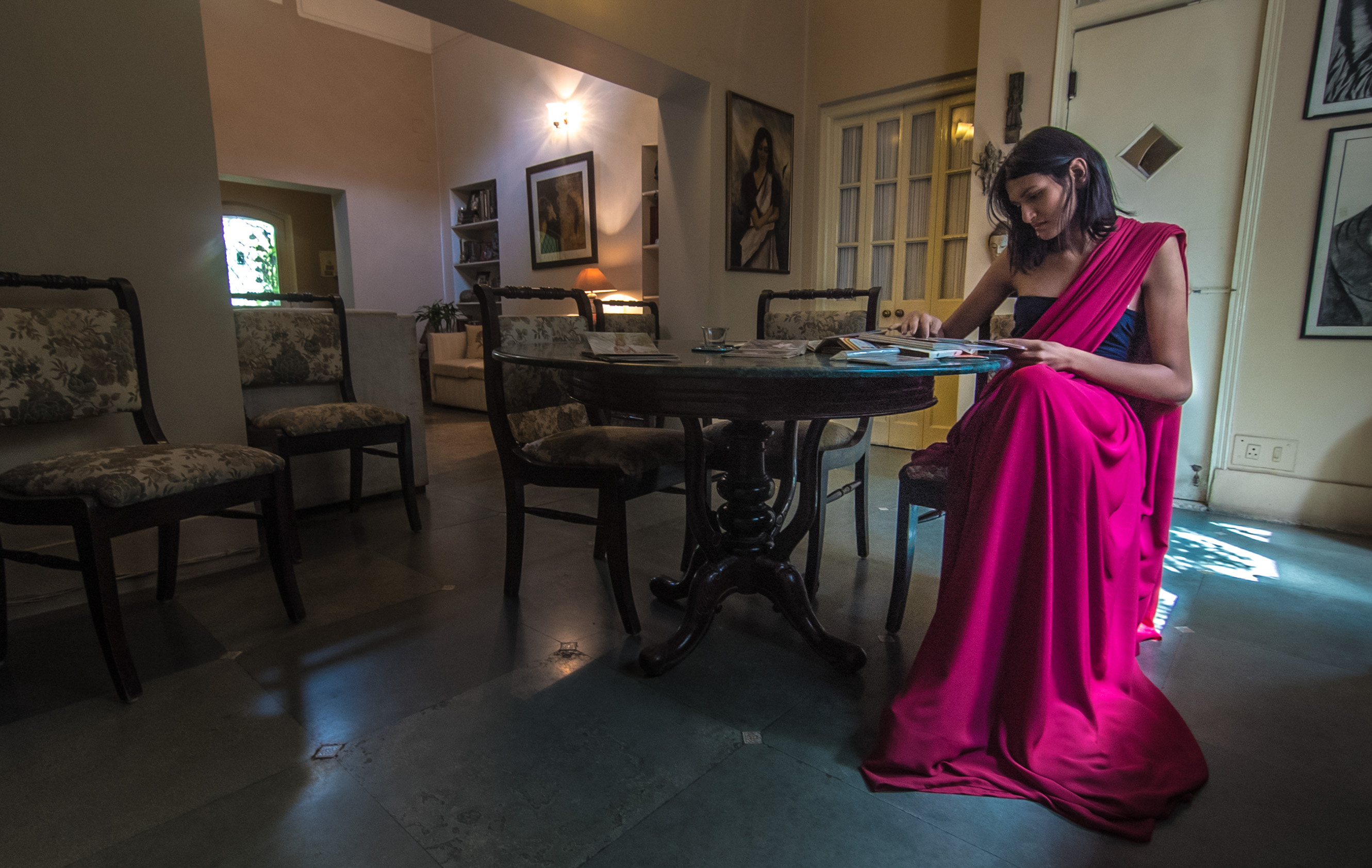
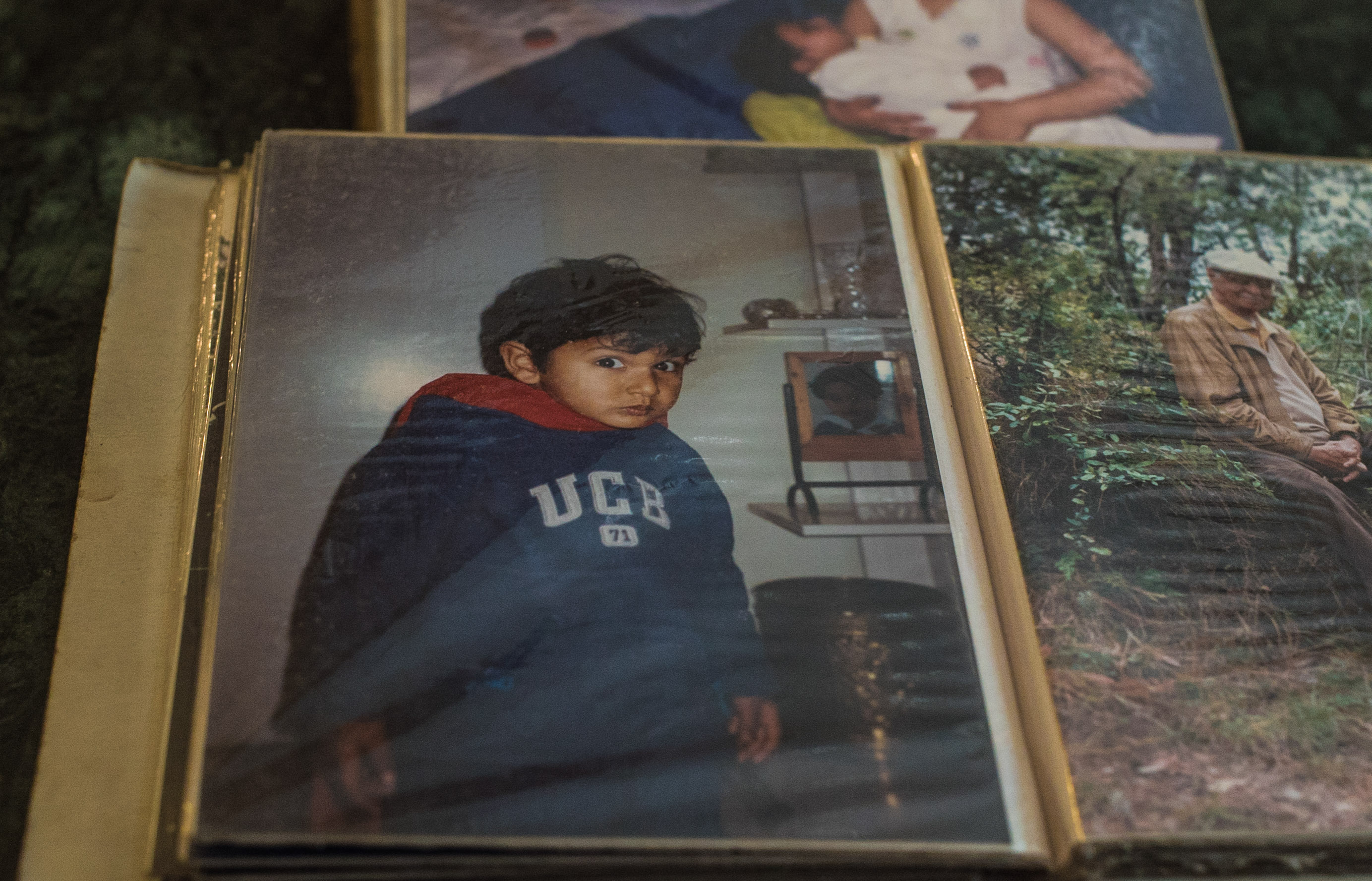







Lodhi Art District, 2019
Film / Street Art / Series

As co-founder and content director of urban arts organisation St+art India Foundation, I crafted the visual language and communication across photo, video and digital. Over a 7 year span I directed and produced more than a 100 films that ranged from mid-length documentaries to artist profiles, montage aftermovies to quick 1 minute edits.
For the Lodhi Art festival in 2019, we published content in 3 formats - Weekly dispatches which gave a realtime sense of all the action onground, artist films which were 1 minute edits, and overall project films. Here are a few of the films.
Dispatches form the ground
Dispatch 02
Dispatch 03
Dispatch 04
Dispatch 05
Lodhi Art District Aftermovie, 2018Artist Films
Artist Films
Yip Yew Chong (Singapore)
Sajid Wajid (India)
H1135 (Nepal)
Sam LO (Singapore)
Tellas (Spain)
Yok and Sheryo (Singapore)
Aaron Glasson (New Zeland)
Yoh Nagao (Japan)
Exhibition FIlms
Big Fat Minimalist (India)
DO + Khatra (India)
Community Mural film - ‘Saath Saath’ (Together)
‘We Are’, Chennai
Creative Direction / Film / Street Art

India has the third largest HIV epidemic in the world. In 2017, HIV prevalence among adults (aged 15-49) was an estimated 0.2%. This figure is small compared to most other middle-income countries but because of India’s huge population (1.3 billion people) this equates to 2.1 million people living with HIV.
This project was conceptualised as a way to de-stigmatize the HIV and AIDS affected community and empower them while sharing hopeful stories of survivors. The panoramic mural, titled ‘We Are’, spread the message of shared humanity, of how people suffering or having recovered from AIDS deserve equal rights and a place in society. The mural drove this message home by mixing portraits of AIDS patients with those who don’t, showing how we are all human, and the same.
This project was conceptualised as a way to de-stigmatize the HIV and AIDS affected community and empower them while sharing hopeful stories of survivors. The panoramic mural, titled ‘We Are’, spread the message of shared humanity, of how people suffering or having recovered from AIDS deserve equal rights and a place in society. The mural drove this message home by mixing portraits of AIDS patients with those who don’t, showing how we are all human, and the same.
‘We Are’ : AIDS Awarenes campaign, 2021
NOW DELHI
Film / Sub-culture / Series

In 2011, I was playing drums with several bands in the indie music scene. Through that time, I was exposed to the creative underground of the city - artists and communities carving their own niche in on-the-fringes scenes. The internet did not exist as it does today, where every moment, whether worthy or not, is documented and shared on social media. This was a time when the underground truly existed, undiscovered by mainstream media. These vibrant sub-cultural scenes existed in isolation, devoid of much mainstream coverage. So I began documenting these sub-cultures as some form of time capsule, capturing moment in the life of the city. It was also meant to be a showcase of the contemporary face of the multi-layered city that was New Delhi. The project was called Now Delhi.
Here’s what the website looked like in 2012 courtesy scrapes from Waybackmachine:
Here’s what the website looked like in 2012 courtesy scrapes from Waybackmachine:
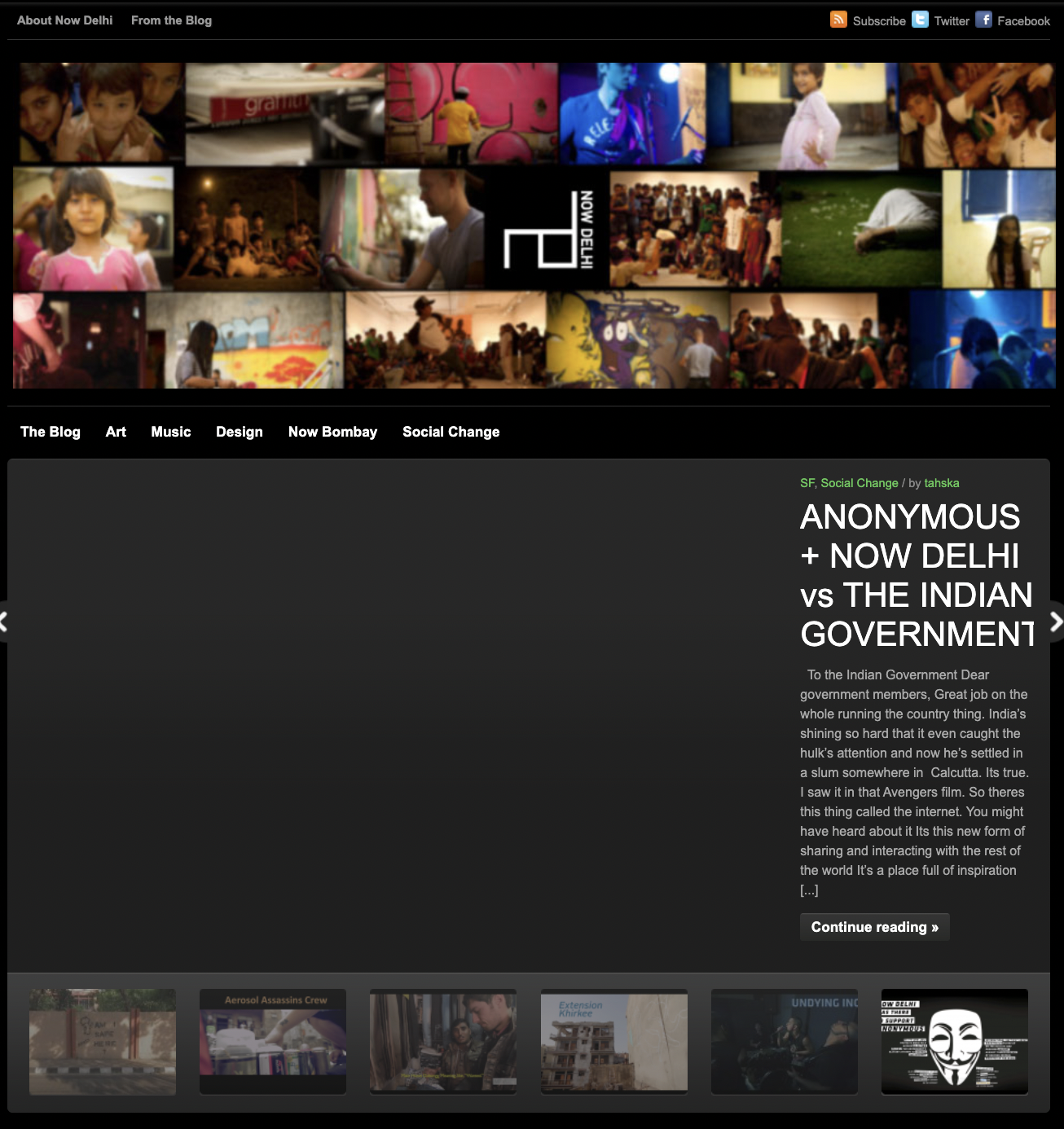
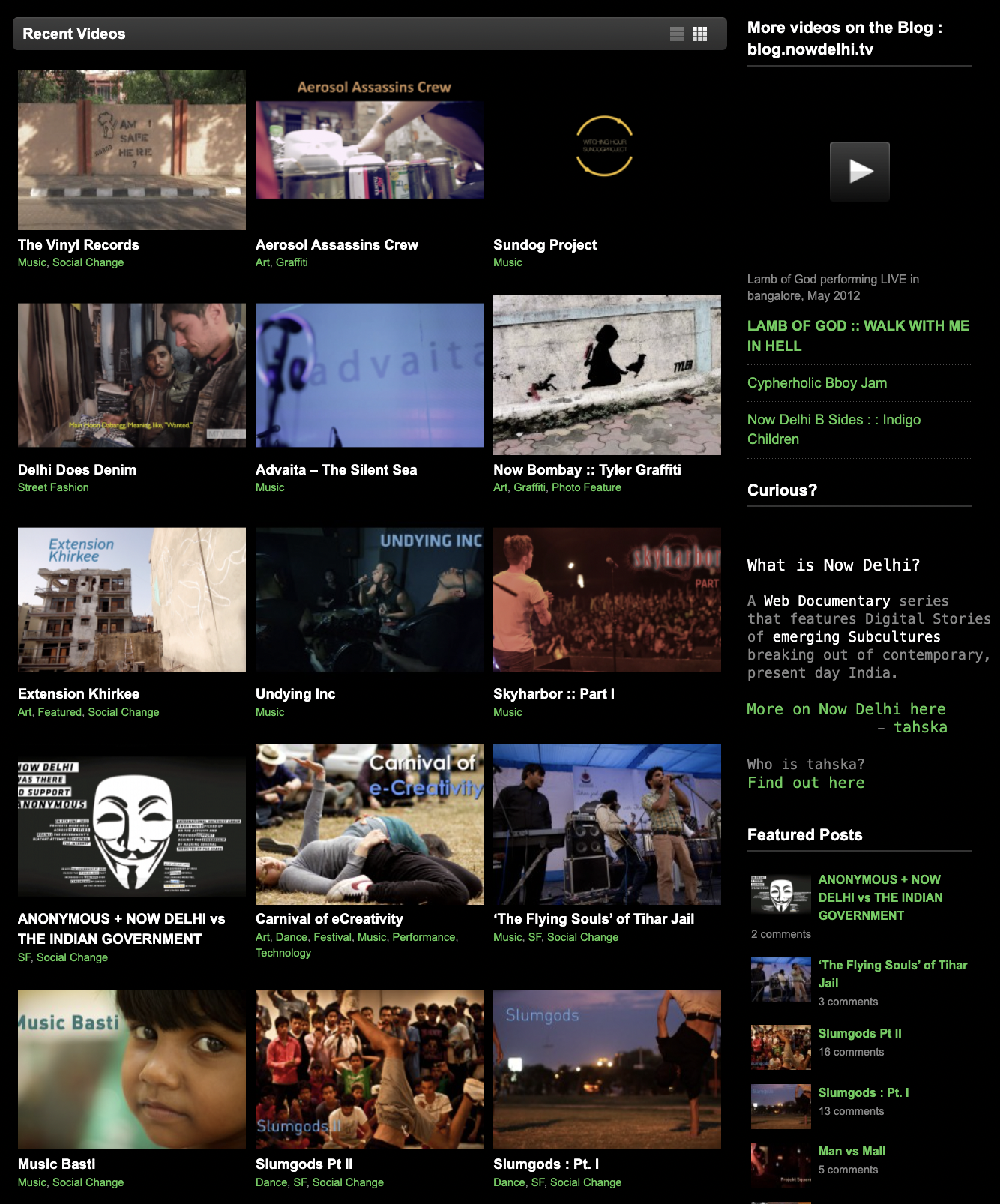
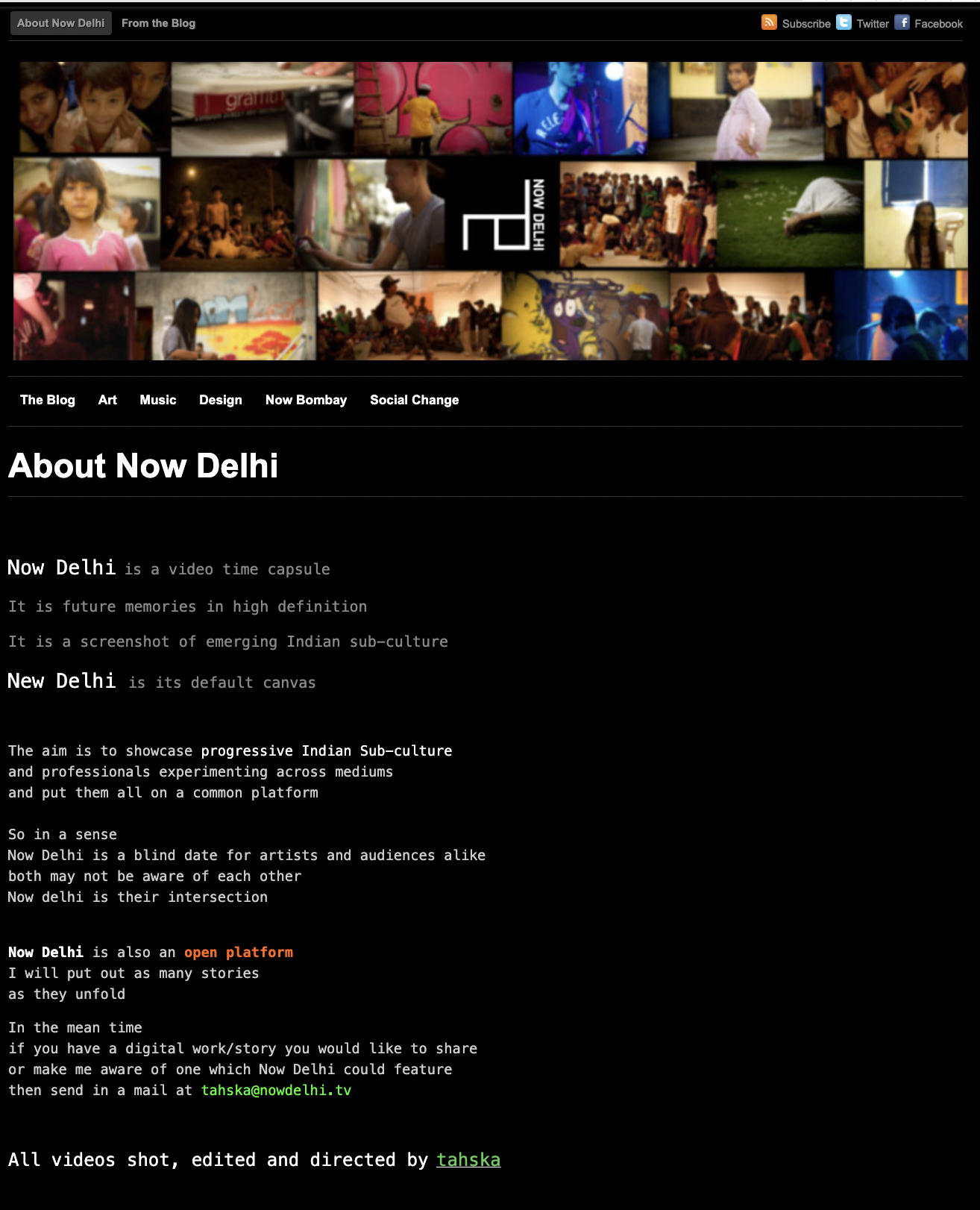
Some Episodes from the series
Slumgods Pt.1 & 2 [ 2011 ]
Slumgods was a two-part feature on the B-Boying scene in New Delhi in 2011, being nurtured by a not-for-profit organization in Khirkee village called Tiny Drops hip hop community. The center worked with at-risk children and enabled skill and personality building through the elements of hip hop like Beatboxing, B-Boying, and Rap music. Tiny Drops provided a safe haven for children who were exposed to extremely harsh living conditions from an early age and gave them a positive outlet to put their mind and energy into. The space catered to youth between 8-18 years, and helped develop a solid foundation in the art forms. The center was led by Netarpal 'Heera' Singh who mentored the children and was a prominent name in the Indian B-boying scene. He also set up a similar program in Dharavi in Mumbai which went on to become the Slumgods foundation of Dharavi.
Extension Khirkee [2014]
Extension Khirkee was a feature on a group of street artists working within Khirkee extension - an urban village in South Delhi, mostly inhabited by lower-income groups of people. It is a place that clearly represents the socio-economic disparity of New Delhi. Separated by a small road, Khirkee extension has two of the biggest shopping malls of New Delhi across it. Mecca’s of opulence visible throw the windows of modestly built one-two bedroom appartments. Extension Khirkee was a community-art project aimed at addressing these dichotomies.
The Flying Souls of Tihar Jail [2012]
Tihar Jail is the largest maximum security prison in South Asia. Delhi band Menwhopause conducted several workshops with inmates, all convicted felons, as a form of Music therapy / social reintegration program and helped create an in-house band called ‘The Flying Souls’. The band featured inamtes convicted of various crimes ranging from fraud to kidnapping and murder. The access to film within the permises of the prison was unprecedented - this was one of the first time visuals from within the compound were published. Thefilm featured interviews with inmates and their experiences, and a performance within the walls of the storied prison complex.
UNDYING INC [2015]
Undying Inc were an extreme metal band from New Delhi. I was interested in probing how the harsh nature of the city influenced their music. Plus, I wanted to shoot an extreme metal band in extreme slow motion. Pretty simple that.
Visaural [ 2011]
Visuaral was a feature on the emerging audio-visual + electronic music scene of New Delhi through BLOT. Basic Love of Thing or BLOT were an Electronic Music / Mixed media ensemble that had an edgy, yet extremely native identity. They were one of the pioneers of the immersive music experience of the country.
Cypherholic [2012]
As an consequence of the Slumgods series, I became well connected with a few of the B-boying crews. Through them i found out about the ‘Cypherholic’ which was a Bboy / Breakdance face-off competition. Crews from all over the country came together to strut their stuff, with kids from all walks of lifeparticipating in a one on one elimination format. This was at the Goethe Institut in New Delhi in 2012.
They Vinyl Records [2015]
The Vinyl Records were a indie / post punk all girl band from New Delhi. They are also girls living in a city unsafe for women. This feature explored what it meant to be a girl in the city, and the statement an all girl band makes.
Indiegeneous [2011]
Indigo Children were one of the most prominent bands in the country in the early - mid 2000’s, and also good friends. They represented the best of the Indie music scene in that moment This was the first ever Now Delhi film
Vandalrt [2011]
This was the first film made with the graffiti writers of New Delhi who did a collab wall with visiting artists from Germany and Spain. This was the first ever Now Delhi film
Absolut
Creative Direction / Packaging / ProductionAbsolut Creative Commune brings together a diverse range of artists to create an open, harmonious world, promoting positive social change through art.
Now Delhi conceptualised the Digital content and stratergy for the campaign, handling everything from creative direction, packaging to direction and editing of all films for both editions.
Now Delhi conceptualised the Digital content and stratergy for the campaign, handling everything from creative direction, packaging to direction and editing of all films for both editions.
Absolut Creative Commune 2023
Creative Direction / Packaging / ProductionAbsolut Creative Commune 2021
Creative Direction / Packaging / ProductionMotion identity by Sanchit Sawariya
Audi
Creative Direction / Direction / ProductionCelebrating the 20th anniversary of the iconic moment Indian Cricketing legend Ravi Shastri won the Audi 100 in 1985.
A series of films were made for Audi including a brand film and this interview film with Ravi Shastri. This project was done with Agency Wieden + Kennedy.
A series of films were made for Audi including a brand film and this interview film with Ravi Shastri. This project was done with Agency Wieden + Kennedy.
Audi Time with Ravi Shastri
HP Z Changemakers
Creative Direction / Curation / Direction / ProductionFor the India launch of the HP Z series laptops, we (XXL collective + Now Delhi) conceptualised and curated a campaign showcasing the power of the Z series as a creative tool for artists. An experiential event in New Delhi showcased onsite installations, with teh artists giving product demos, along with a digital media campaign. This was the overall film for the experience and works.
Audi Time with Ravi Shastri
Heroes of Mumbai
Direction / ProductionAs the world grappled with fear and uncertainity during the Covid-19 pandemic, frontline workers were our last line of defence. Asian paints paid tribute to their contribution by painting a mural on the facade of the Mahim Station in Mumbai.
Heroes of Mumbai / Asian Paints
Instagram :
We the Women
Direction / ProductionInstagram in collaboration with We the Women Asia platformed some of the most prominent voices around the ideas of feminism, gender and sexuality.
Now Delhi handled all production and direction for the campaign that included 5 individual films, and one composite edit. Here are a few with influencers Prajakta Koli, Mallika Dua, Karuna Ezara Parikh, Natasha Noel and Aravani Art Project.
Now Delhi handled all production and direction for the campaign that included 5 individual films, and one composite edit. Here are a few with influencers Prajakta Koli, Mallika Dua, Karuna Ezara Parikh, Natasha Noel and Aravani Art Project.





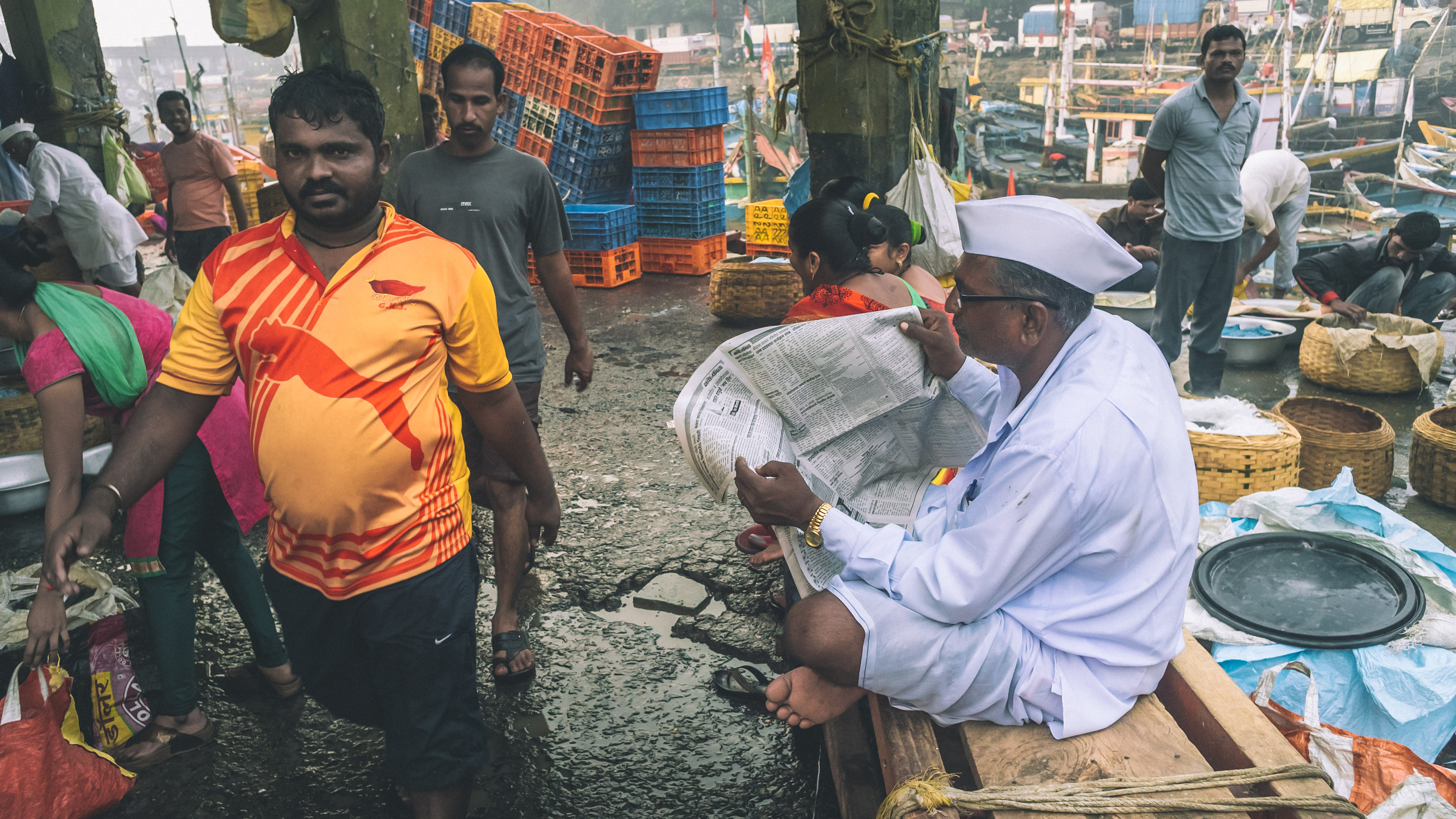


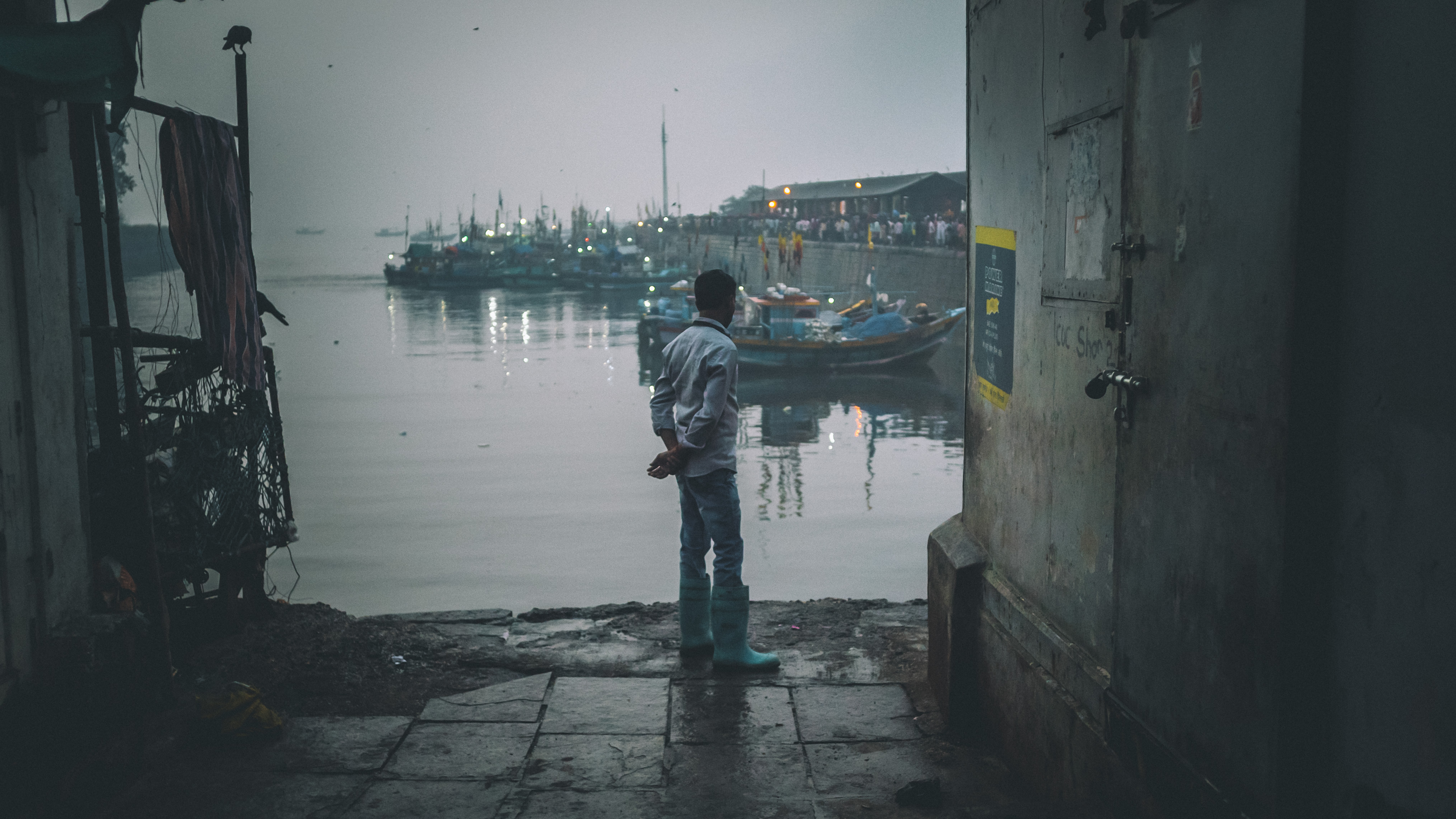
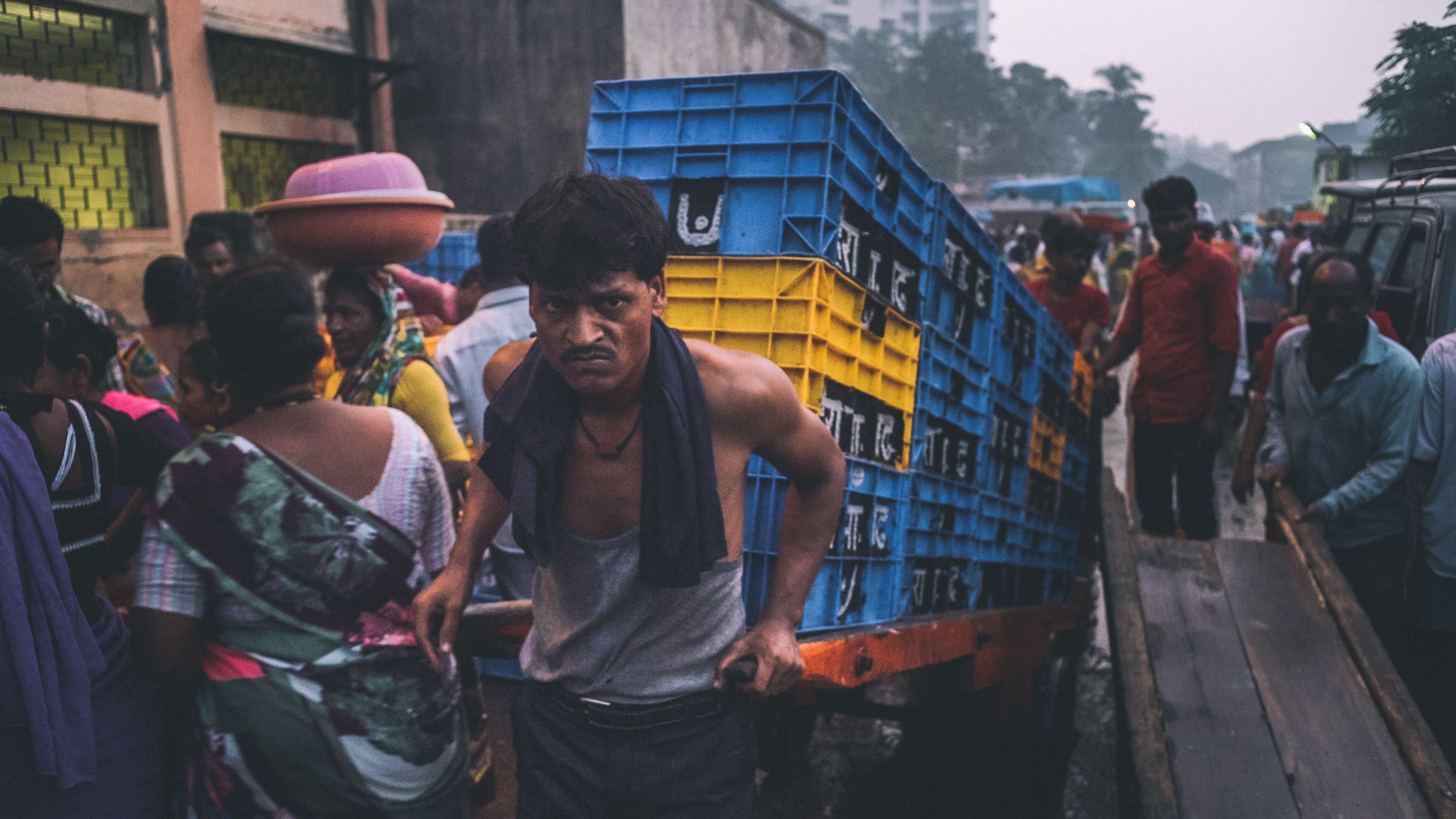





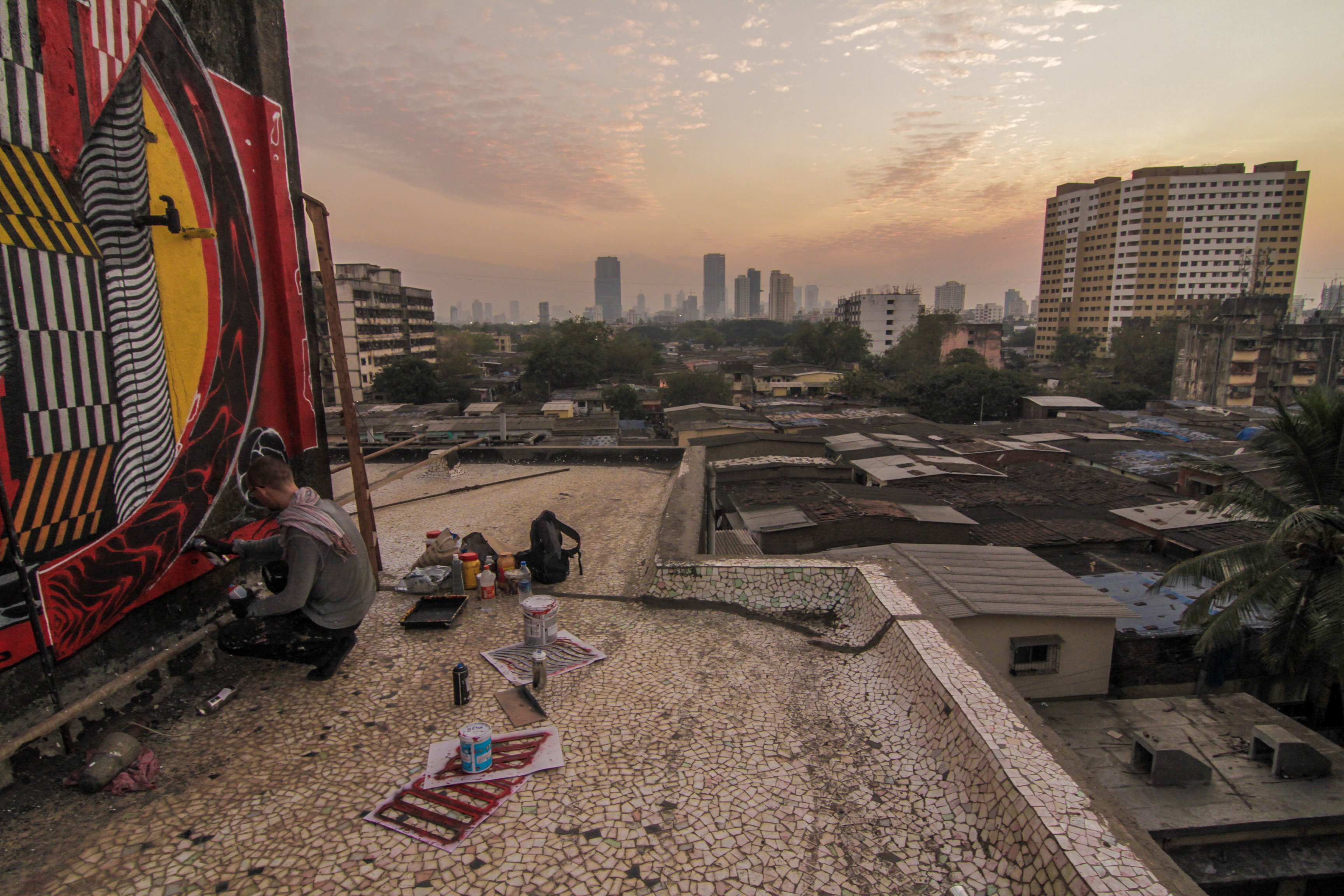







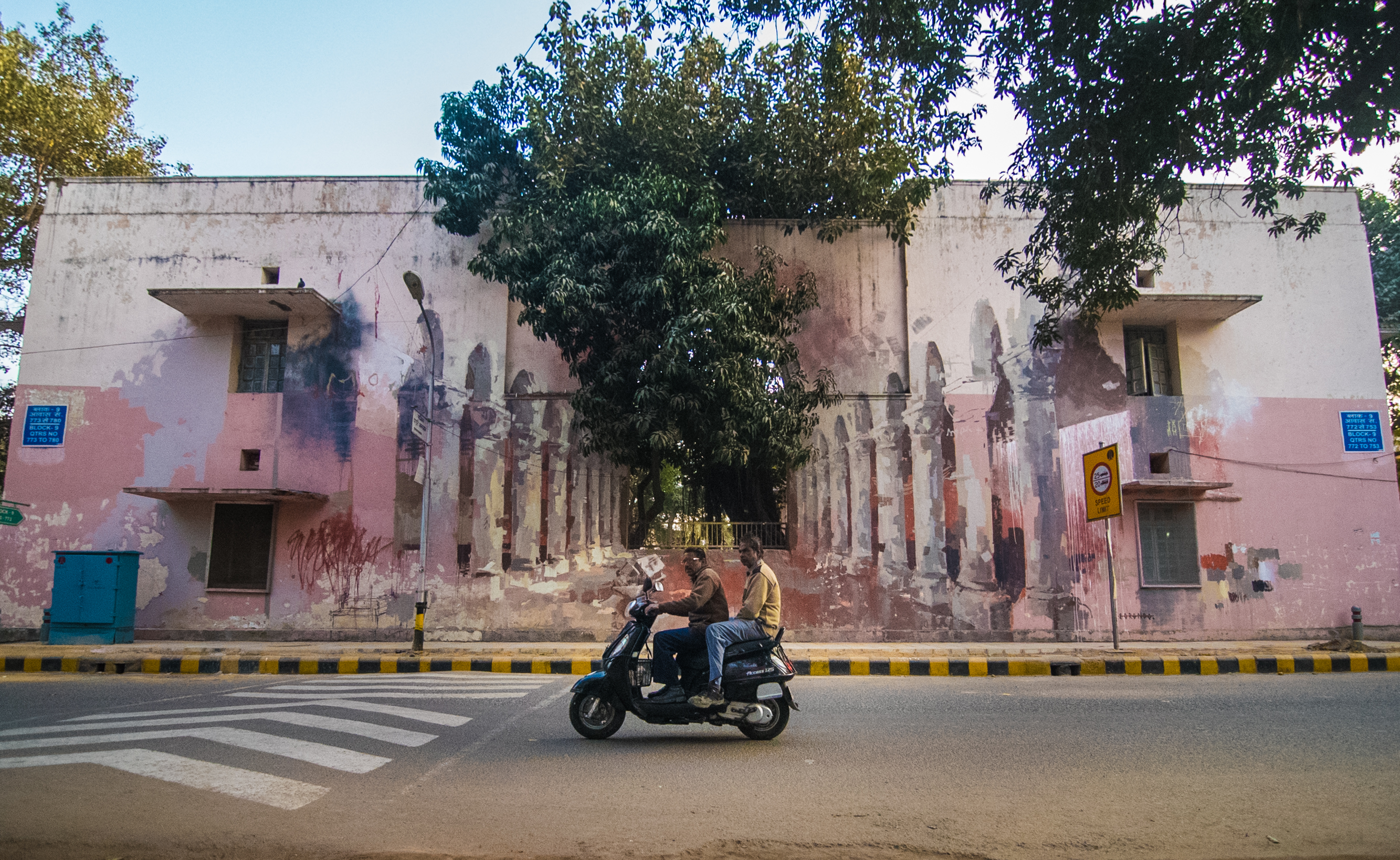









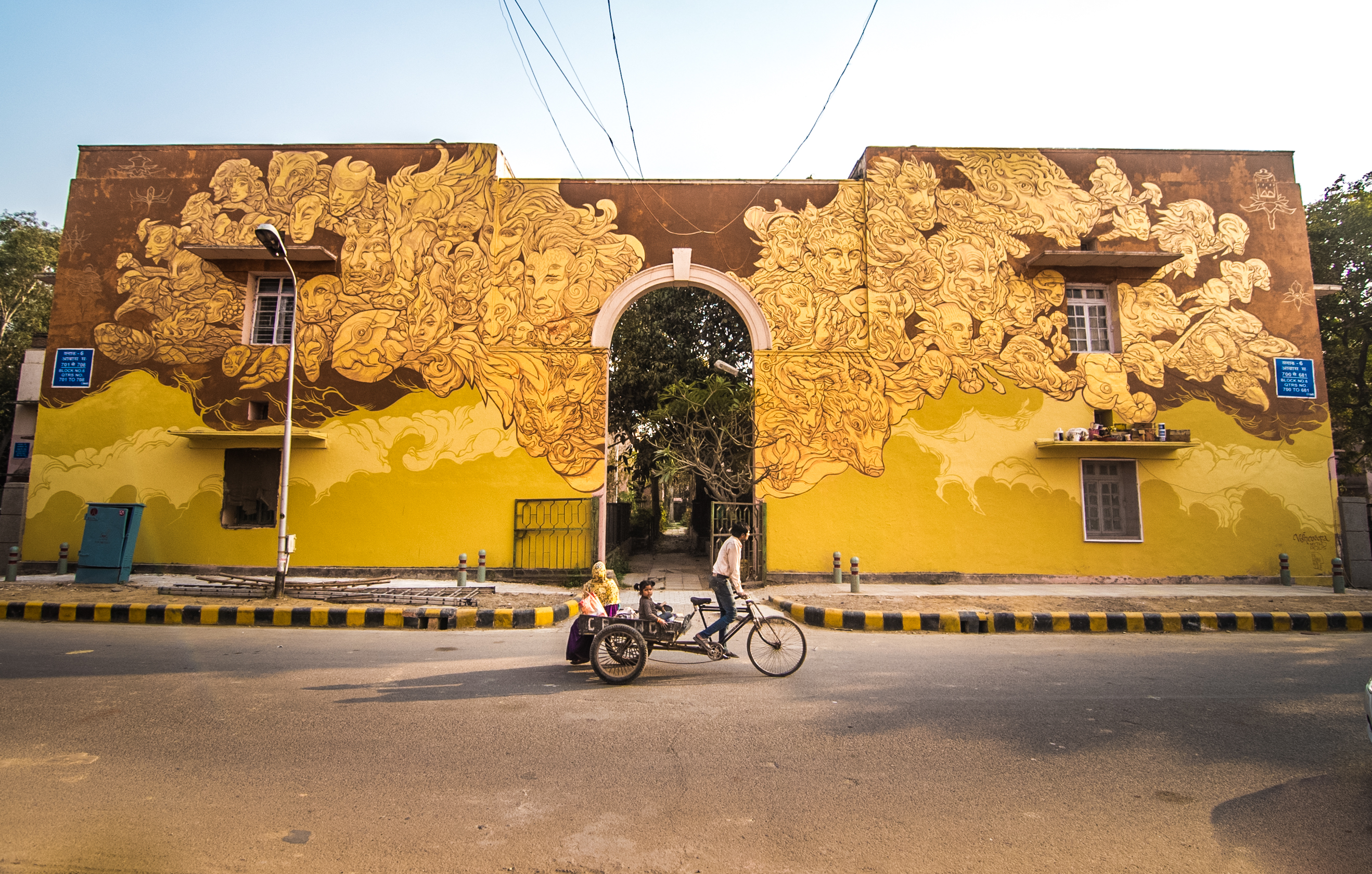




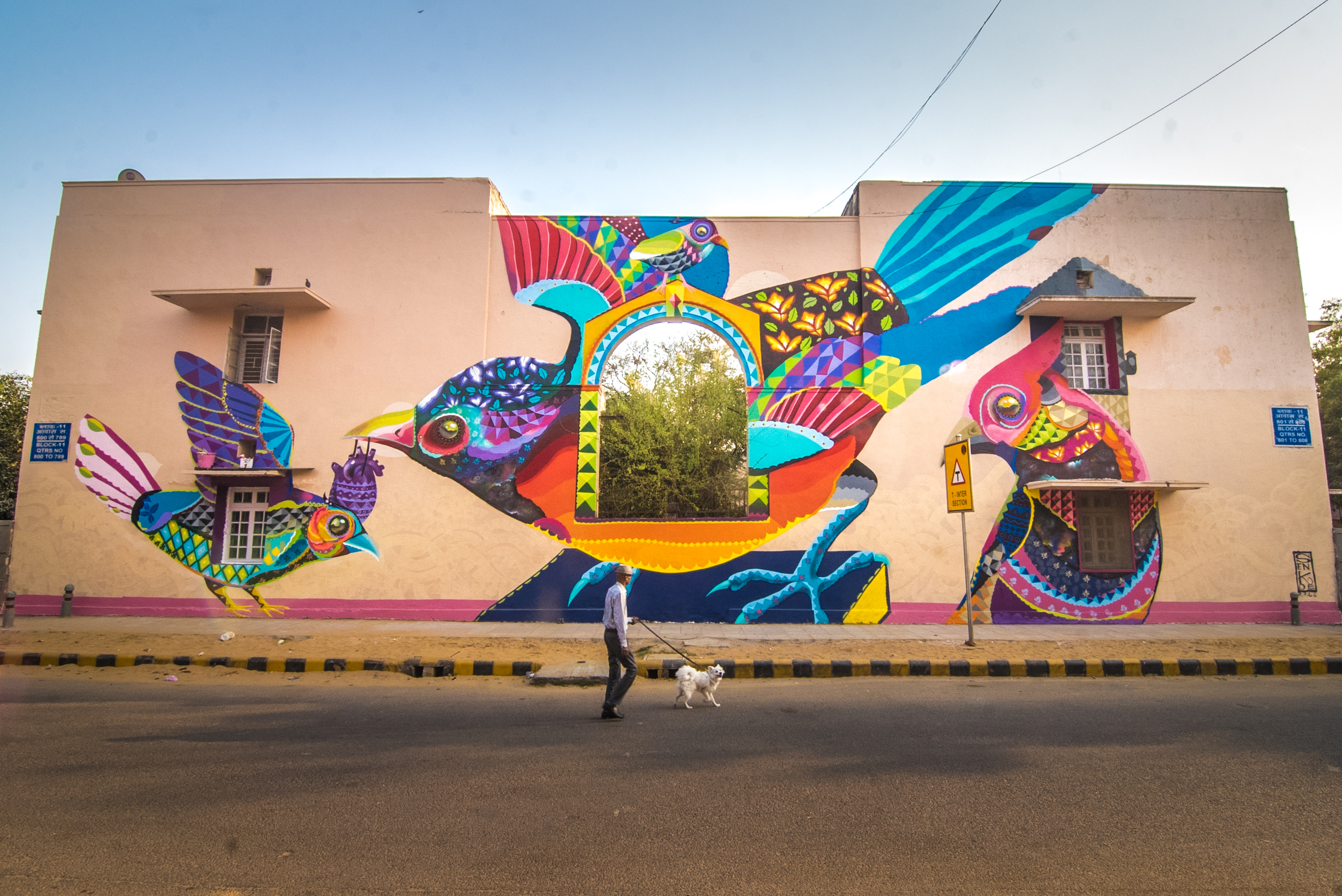
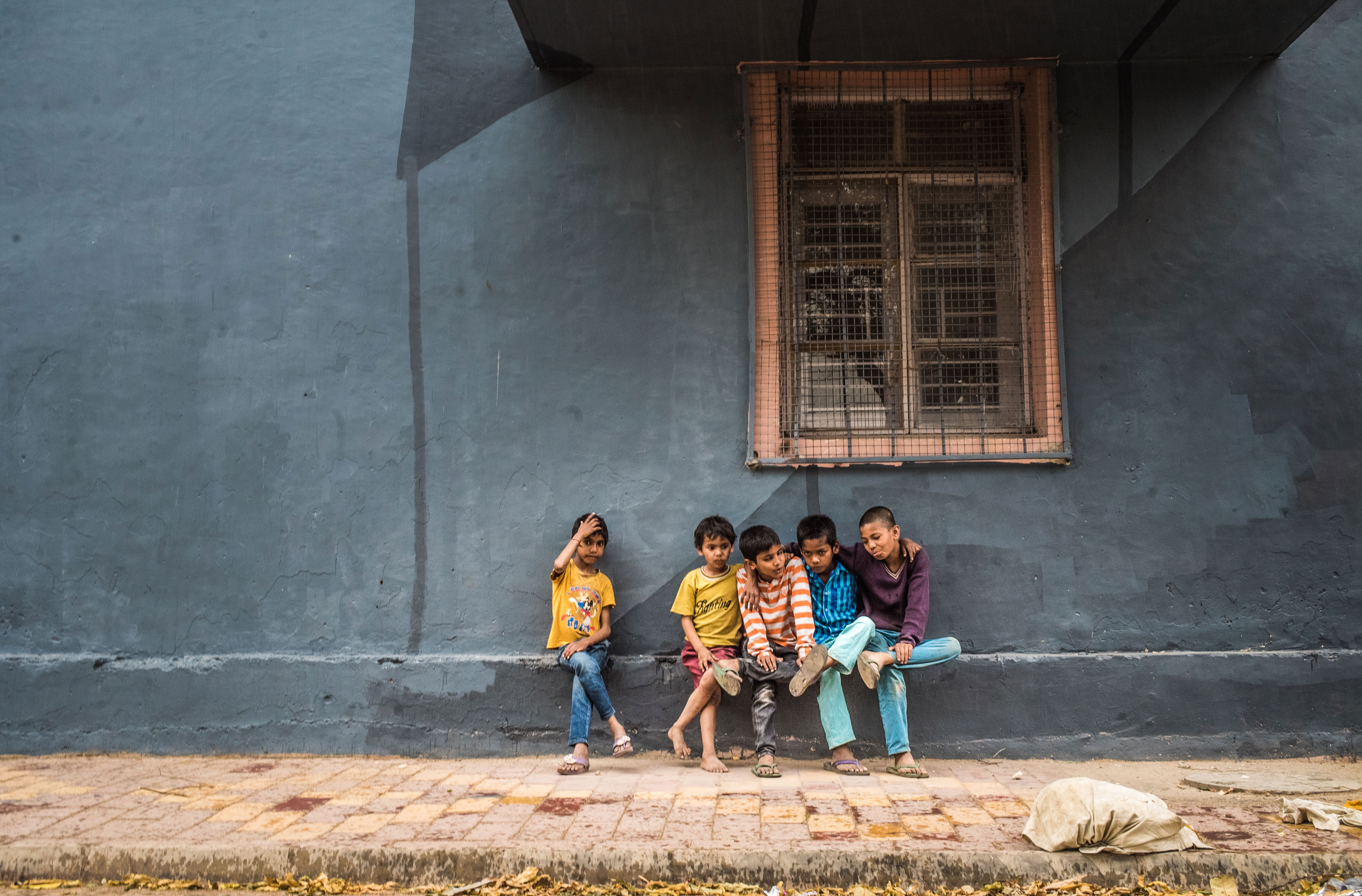



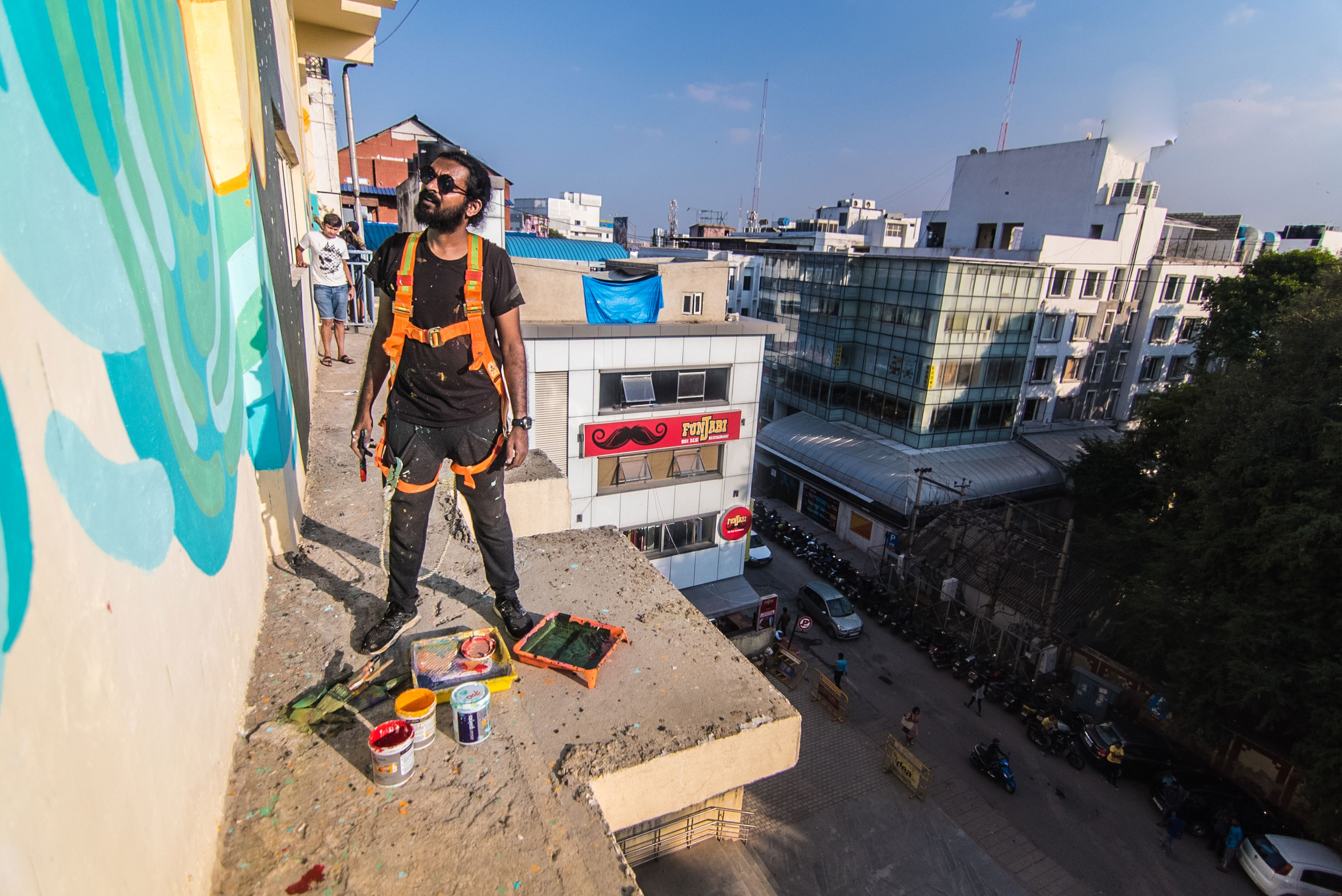

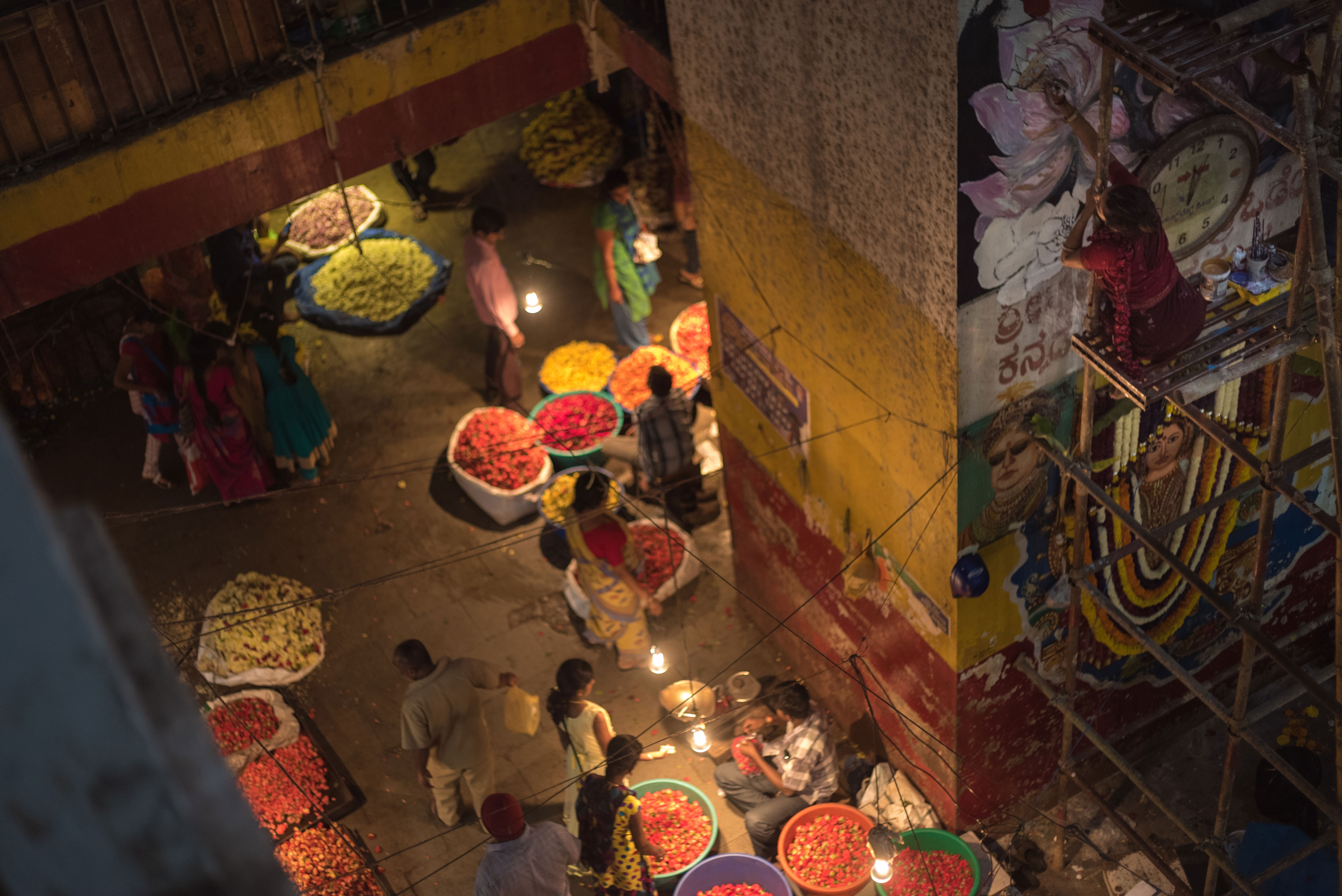
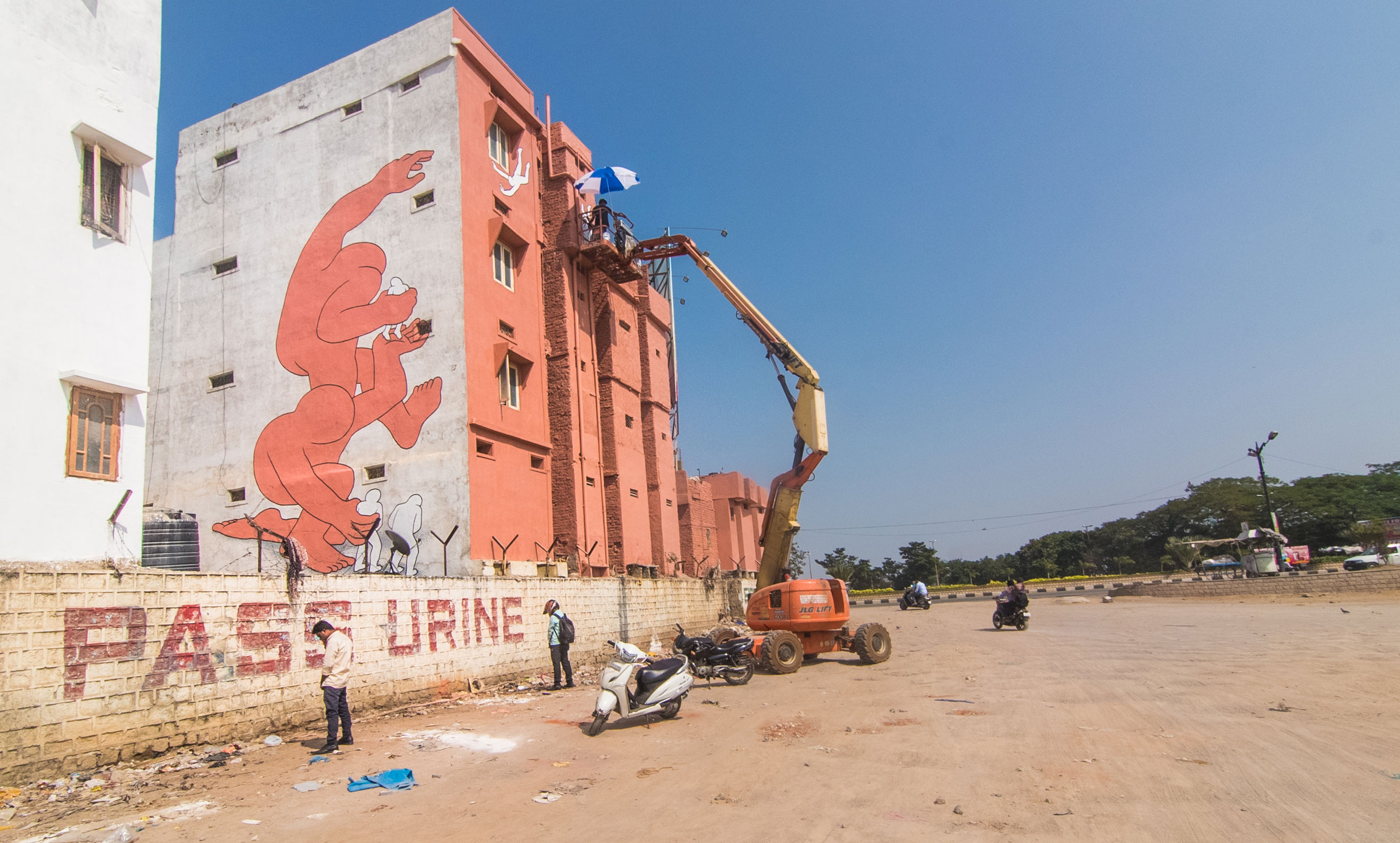
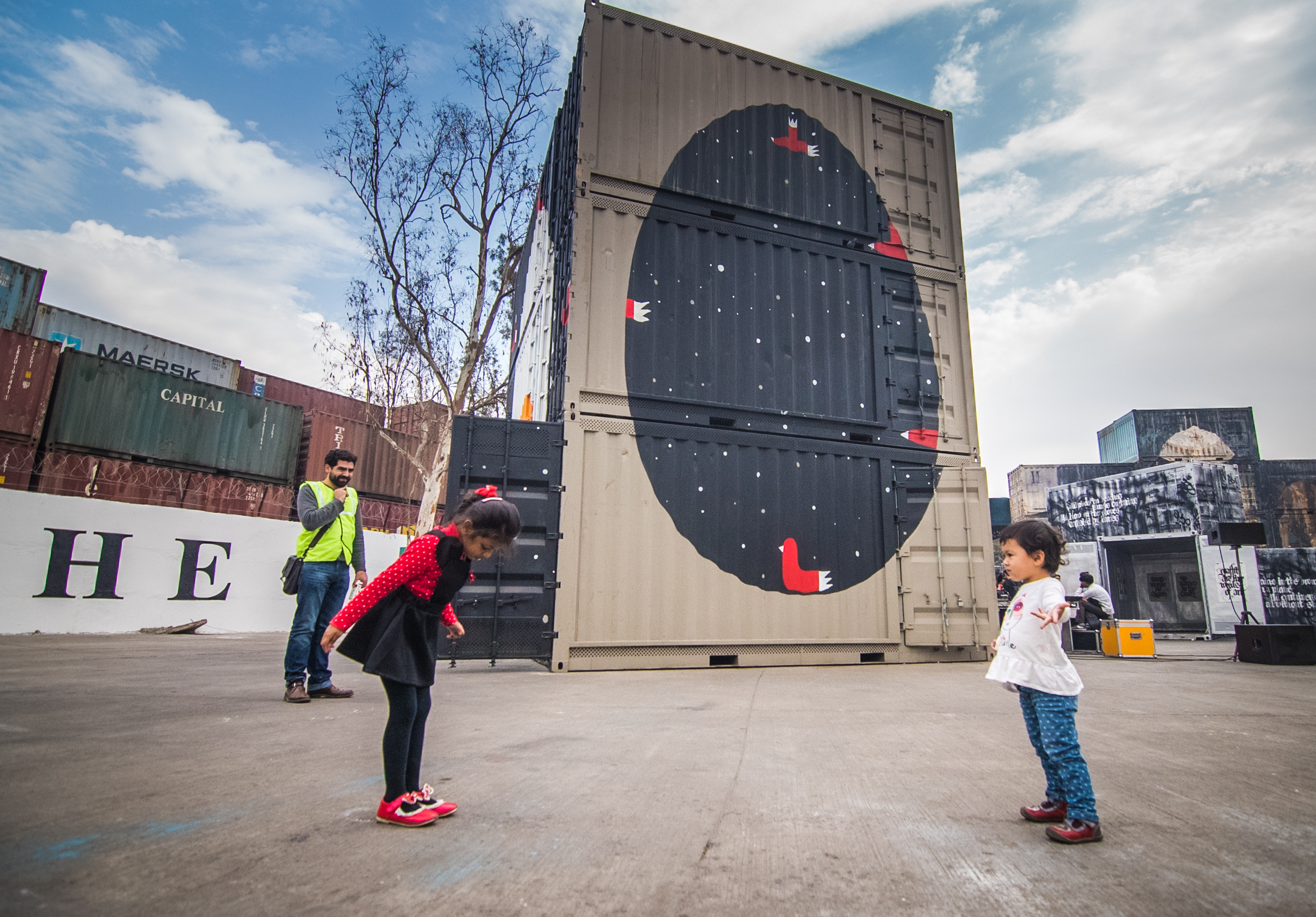




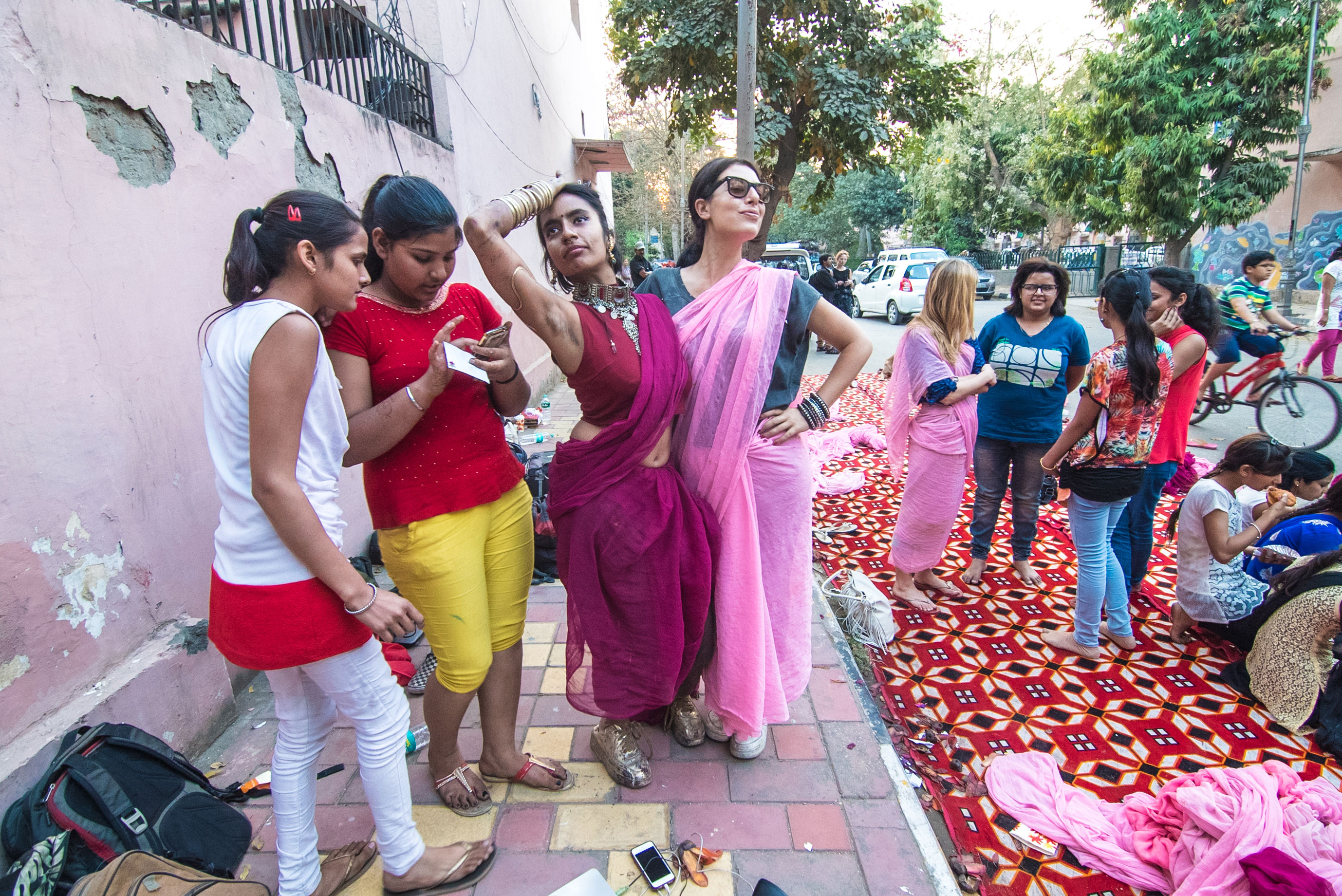
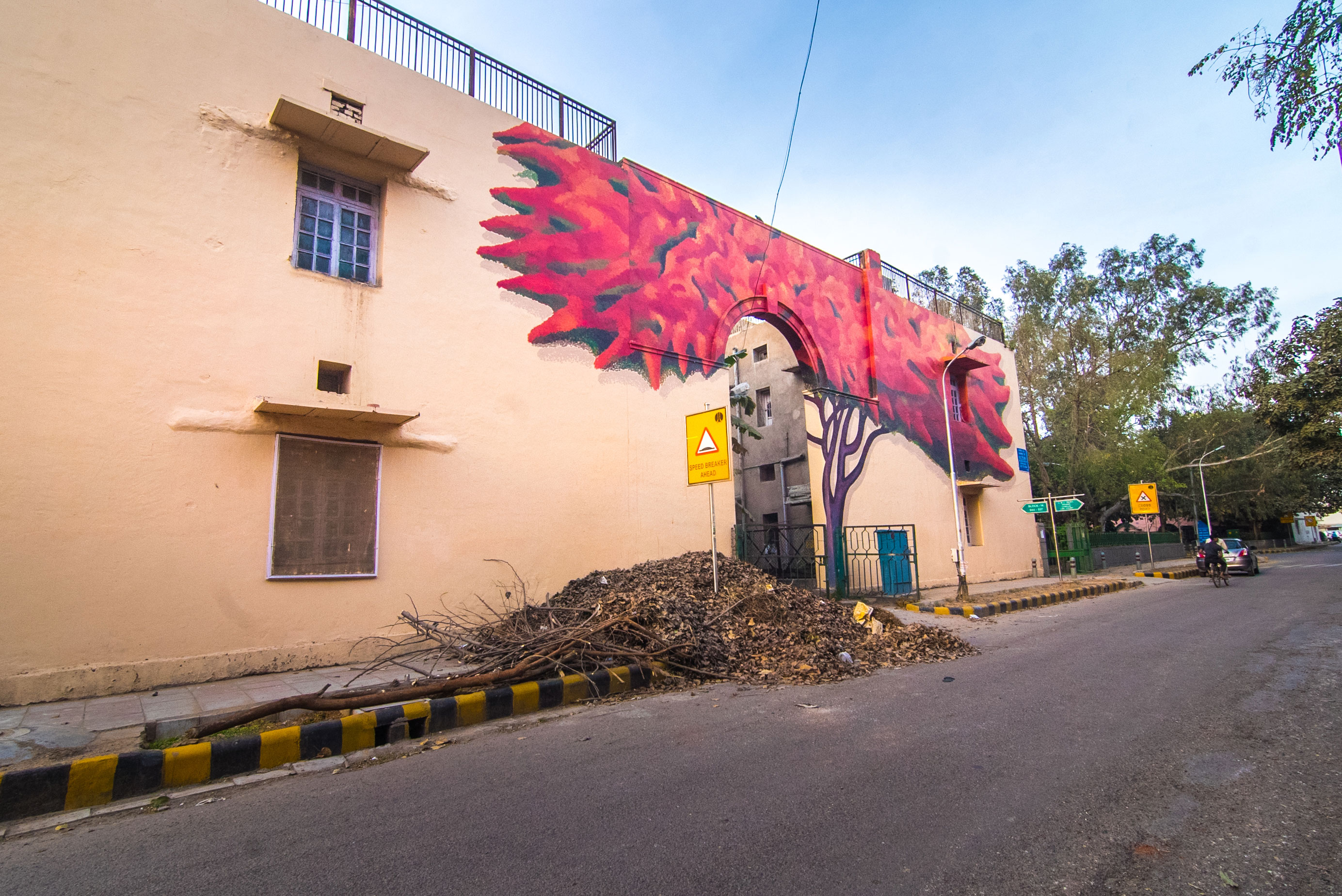
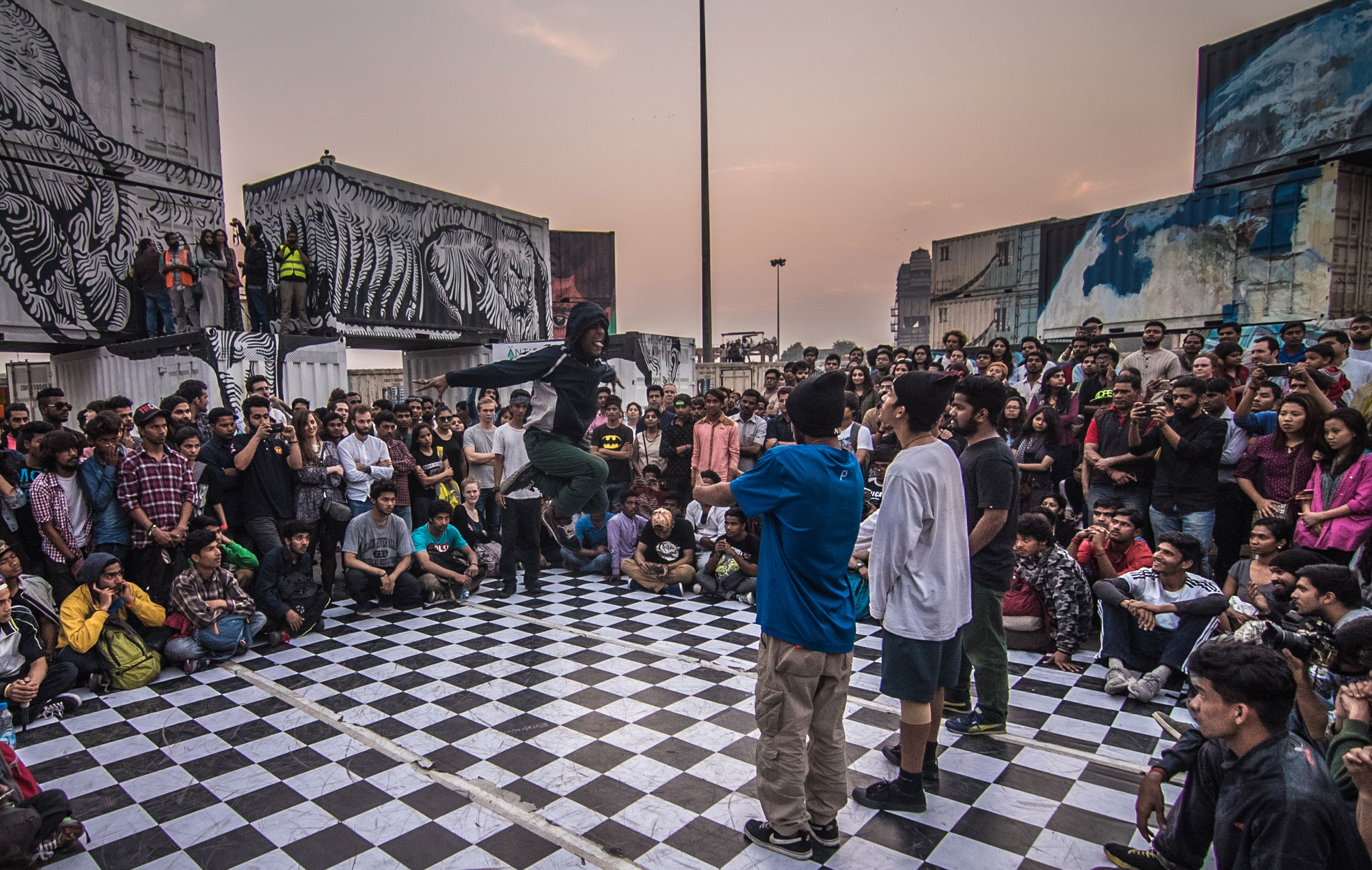
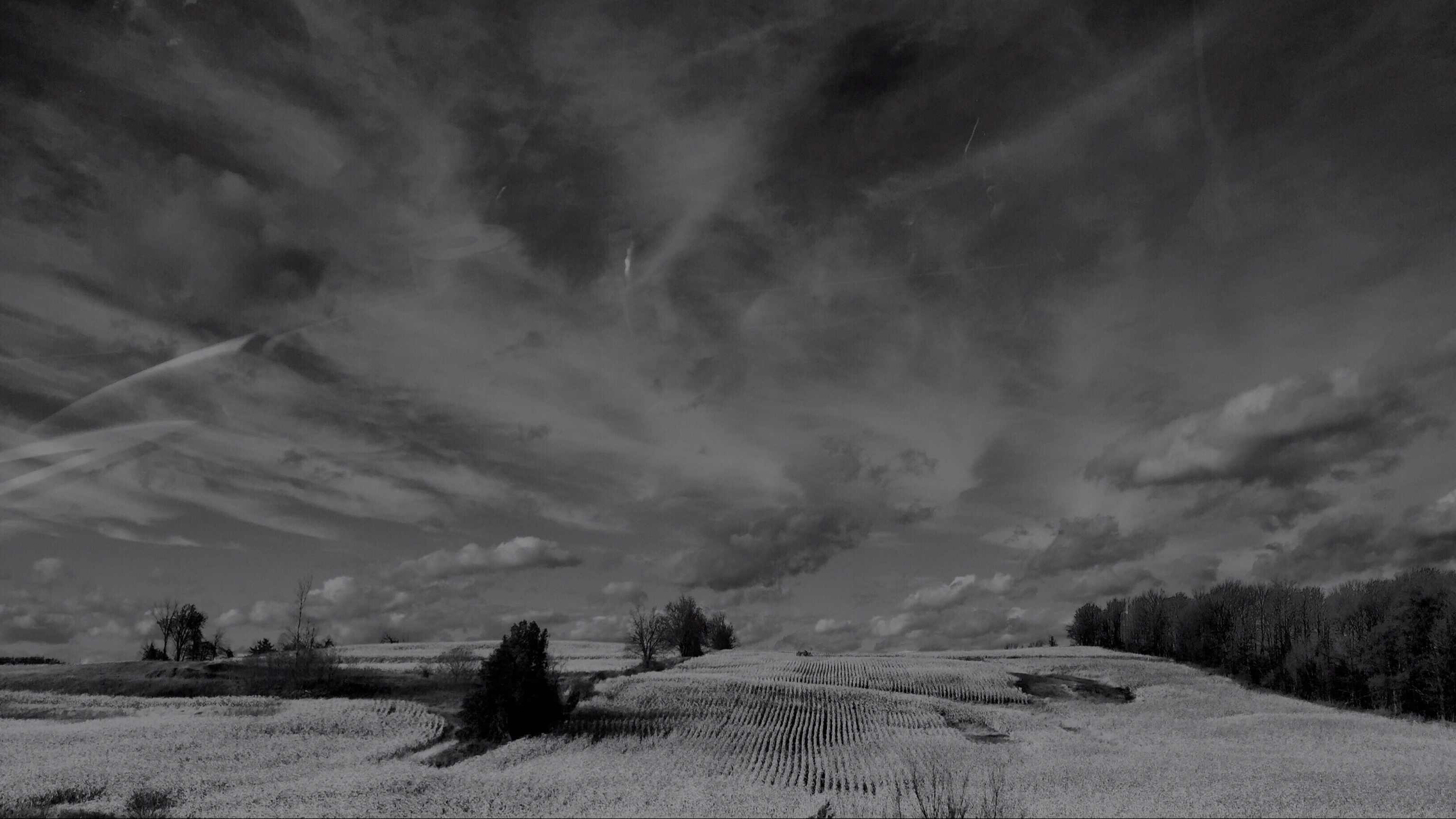


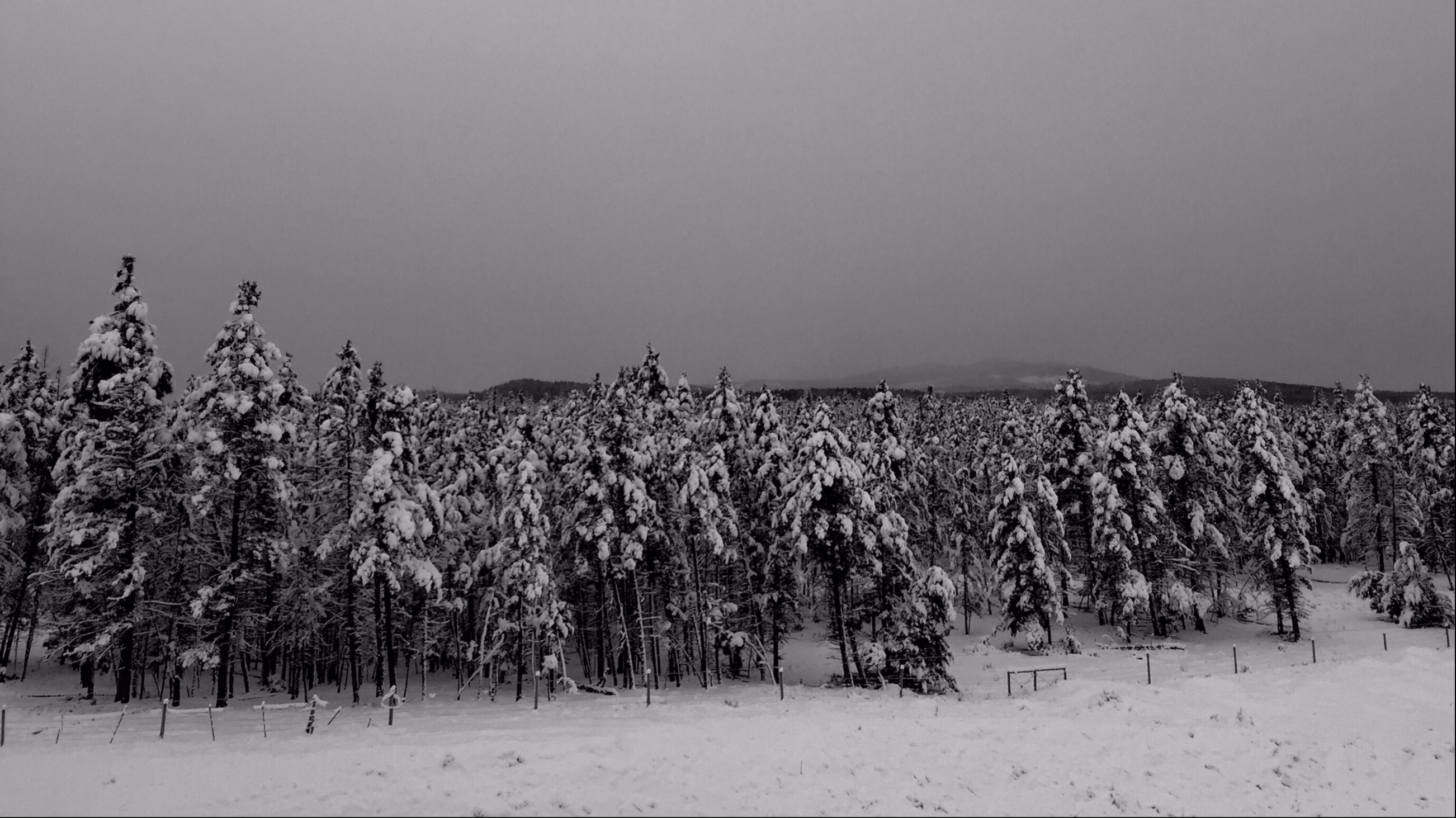


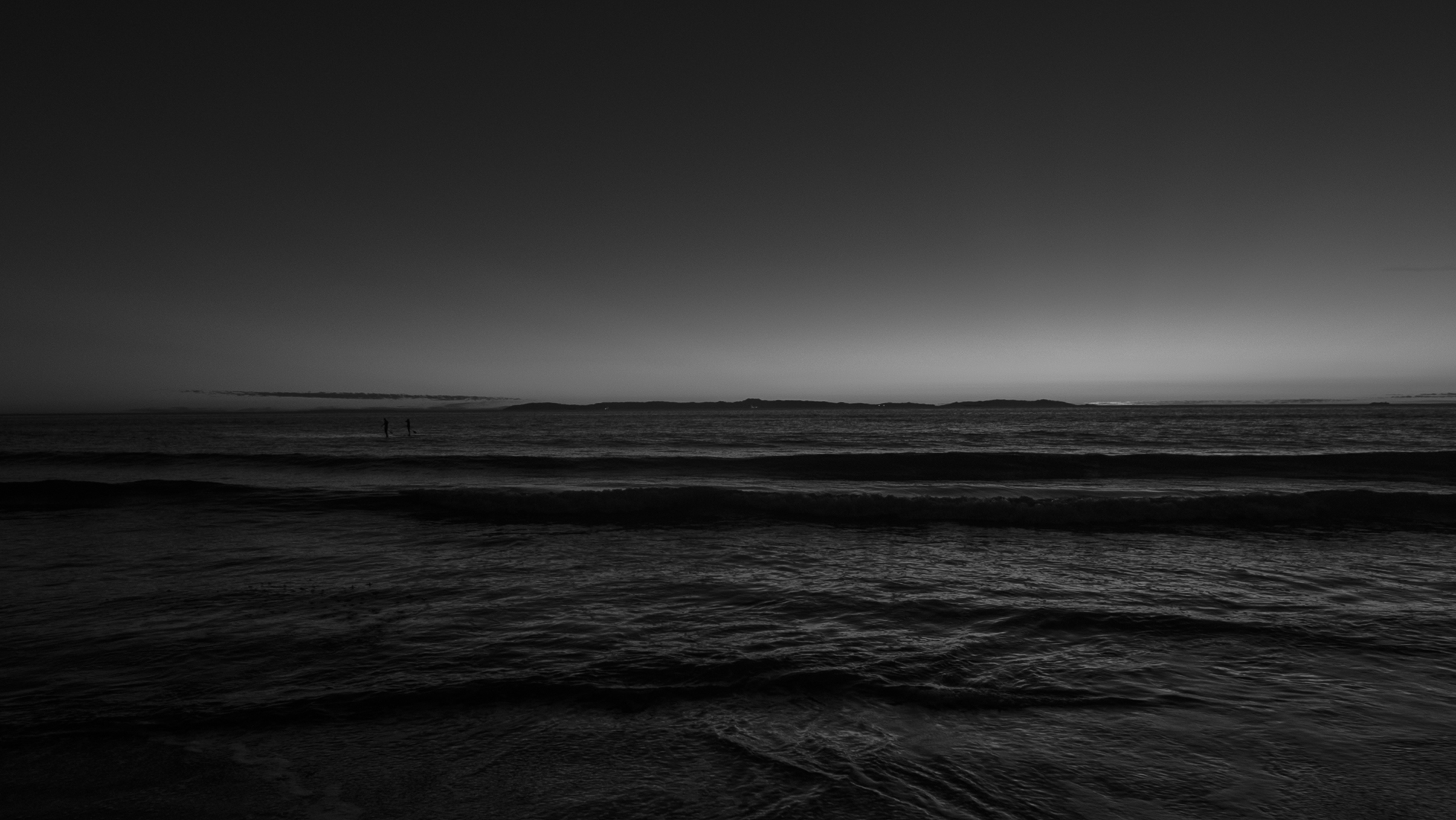






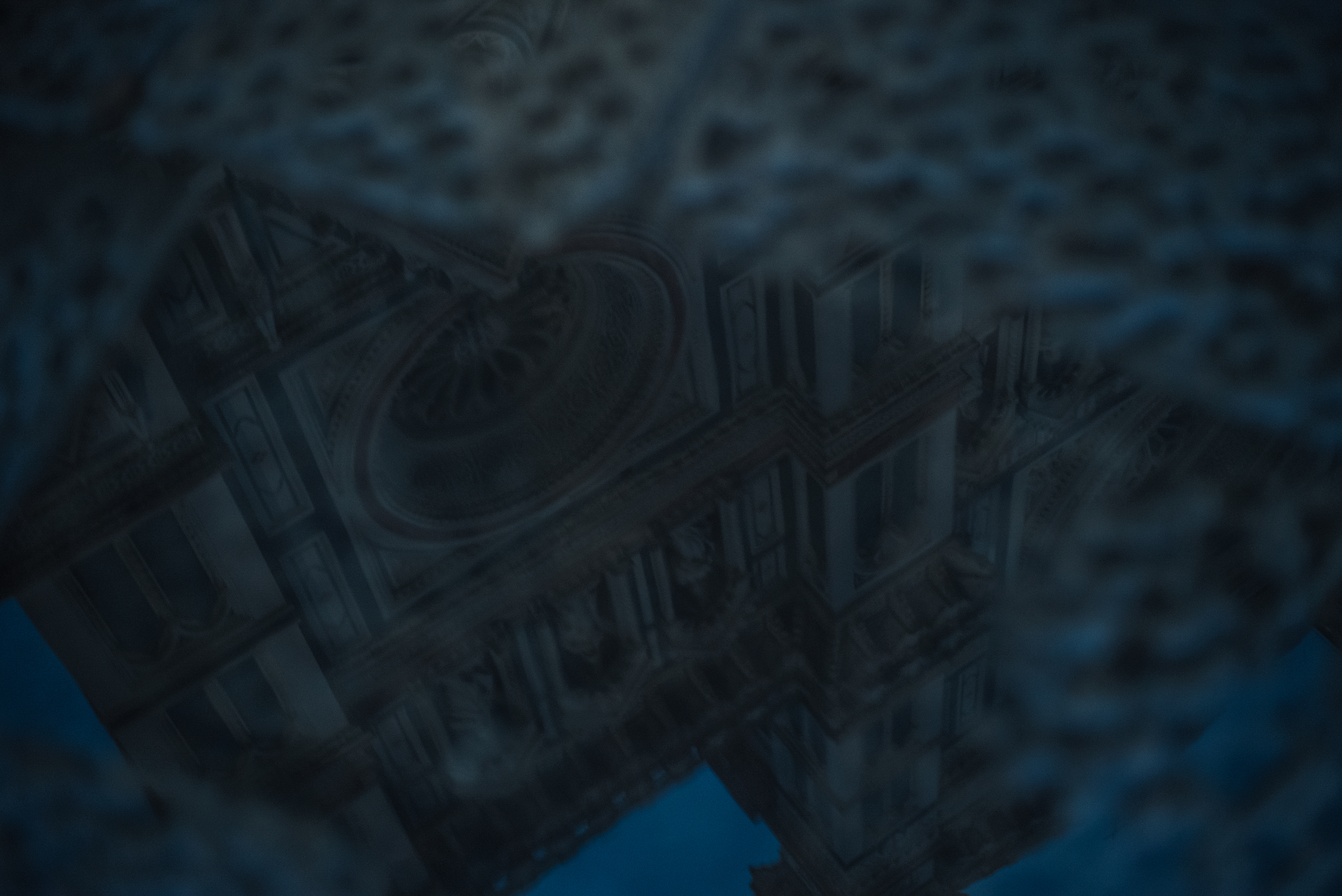


Yesnomaybe is my solo project which is a space where I try and make all my creative vices talk to each other. The home page has 2 music videos I have made for these tracks using Augmented Reality. The project debuted on Red Bull Premieres in 2020. I will release more music (repeat to self)

Hoirong is a noise / punk project started by Kamal Singh (extreme right) who is a mad genius. I loved the project much before I was a part of it. The first album was released as a studio album in 2013. Kamal reached out to put a live band together and there was no looking back. Over 10 years we released 4 albums and an EP. We probably had like 5 ‘fans’ but we did recieve a lot of ‘critical acclaim’. I am no longer with the band, but still love all the music.
HOIRONG // COW GIVES MILK (2019)
[Noise / Punk Rock]
HOIRONG // MWAH (2016)
[Noise / Punk Rock]
[Noise / Punk Rock]
HOIRONG // DANDANIYA APRADH (2014)
[Noise / Punk Rock]
[Noise / Punk Rock]
HOIRONG //
The Resurrection Of The Princess Of Woe And Her Vampire Hound Posse (2013)
[Noise / Punk Rock]
![]()
The Resurrection Of The Princess Of Woe And Her Vampire Hound Posse (2013)
[Noise / Punk Rock]

Another Vertigo Rush was my Prog Rock band heavily inspired by the likes of Tool, Oceansize, Nine Inch Nails, Mogwai and the likes. We played all original music [except 1 cover - Vicarious by Tool / 1,000 days], released one studio album, won the Toto Funds the Arts Award nin 2009, and played the legendary Great Indian Rock Festival in 2009.
Cow Country
Music: Nine Inch Nails // Survivalism
Drake will save the world
Music: Hotline Bling // Drake
Redrum
Ultravoilence
Too weird to live, too rare to die
FAKEPLASTIK
Music: Megalomaniac // Incubus
Music: Megalomaniac // Incubus
[Exist]
[Drowning]
MUSIC : FRIGHT NIGHT / ARIEL PINK'S HAUNTED GRAFFITI
MUSIC : FRIGHT NIGHT / ARIEL PINK'S HAUNTED GRAFFITI
[Detach]
[SAYONARA]
MUSIC: VOX HUMANA / DEERHUNTER
[SAYONARA]
MUSIC: VOX HUMANA / DEERHUNTER



